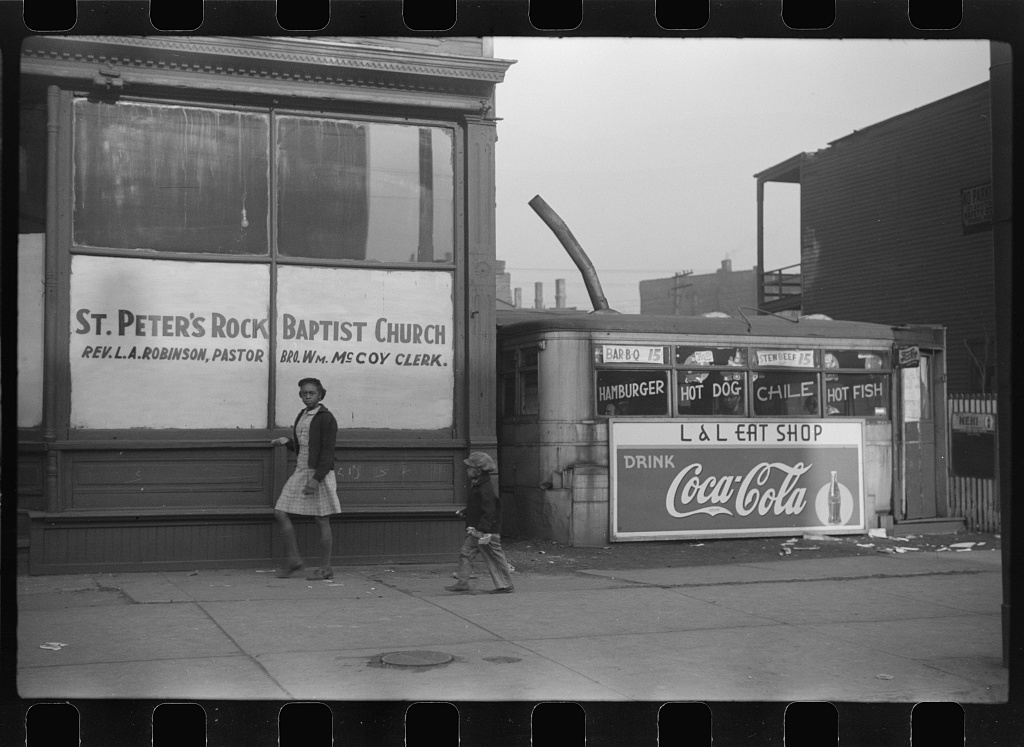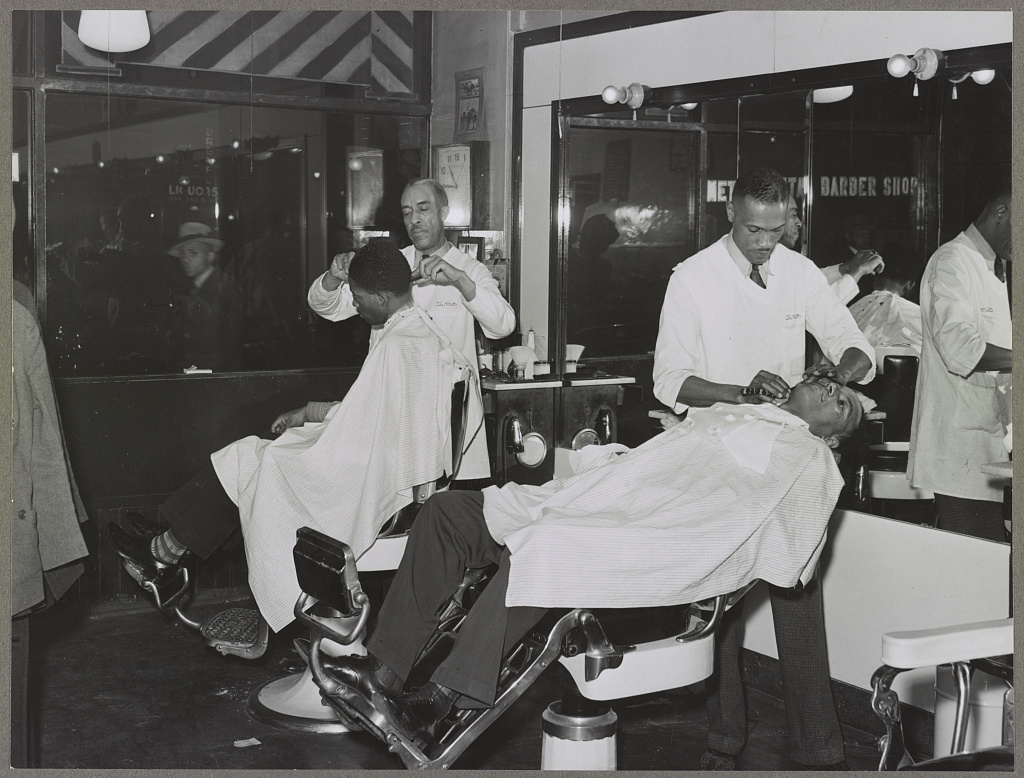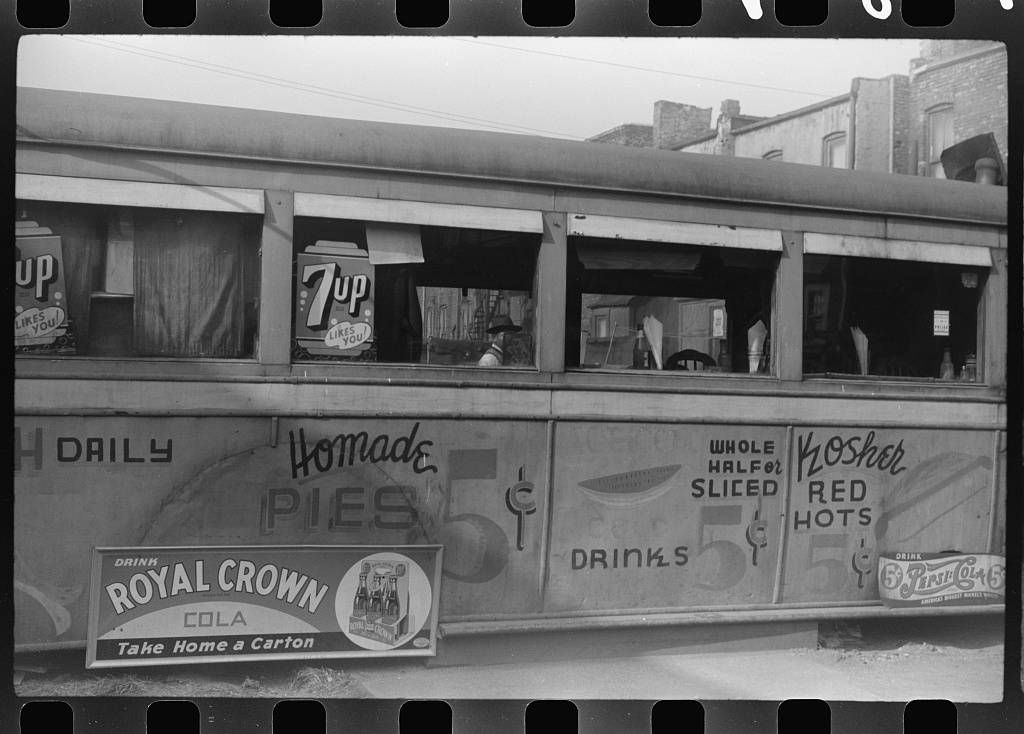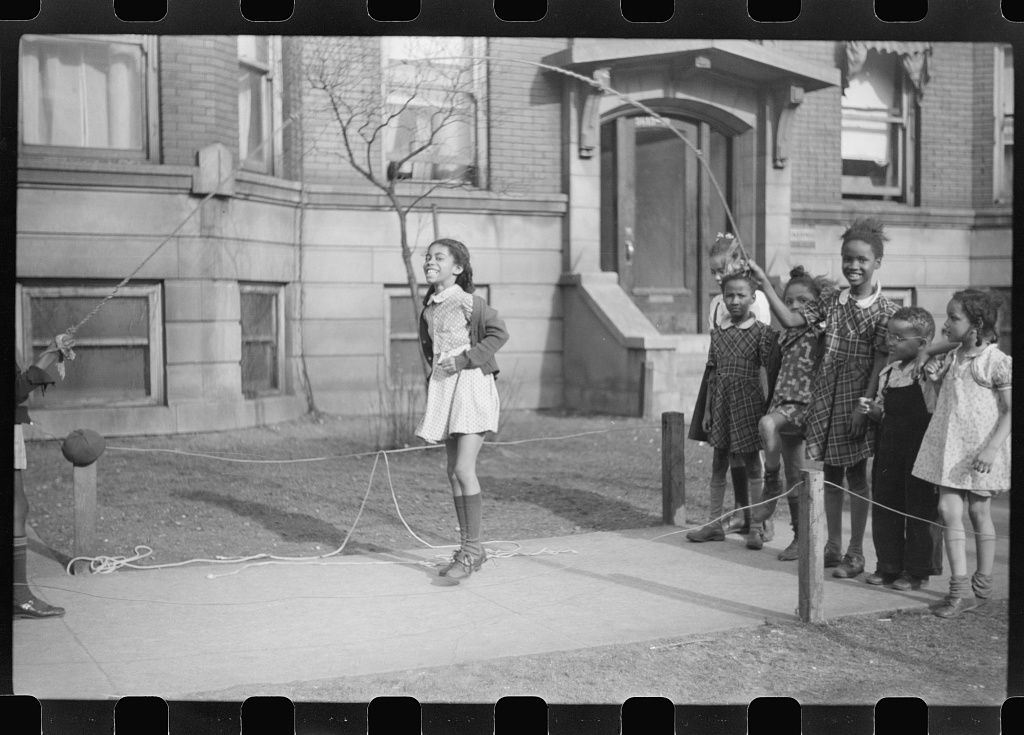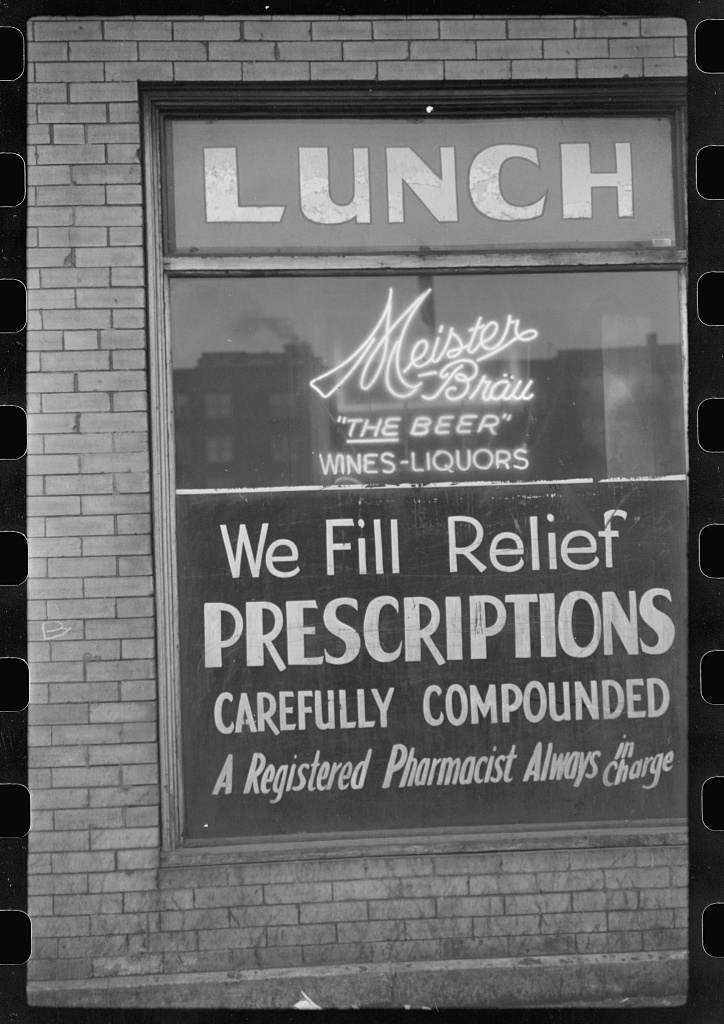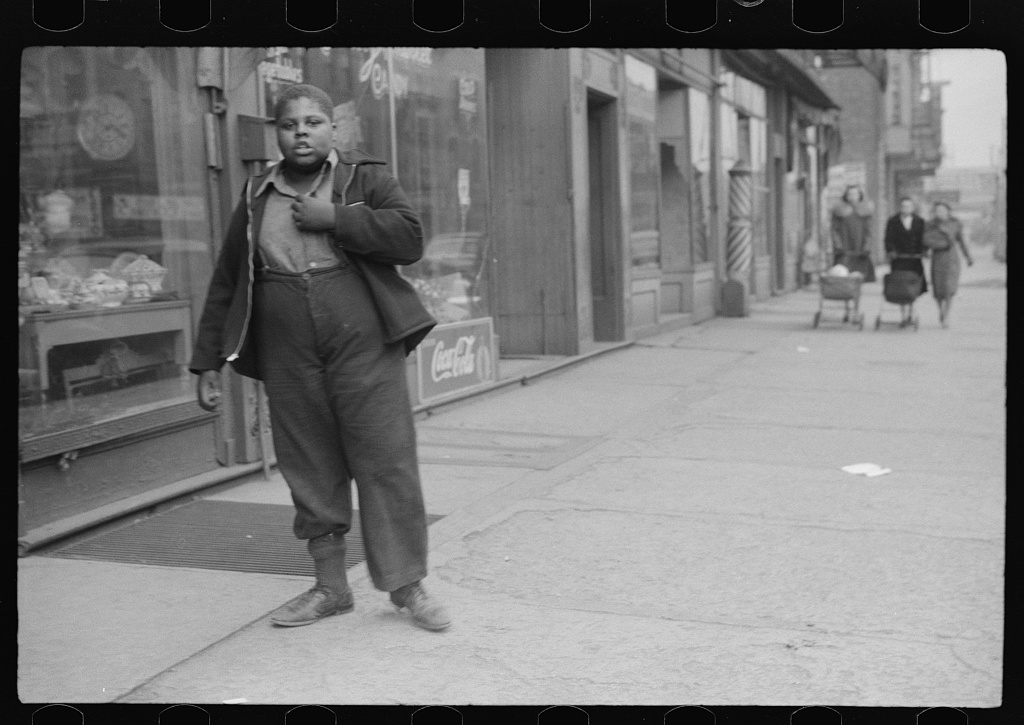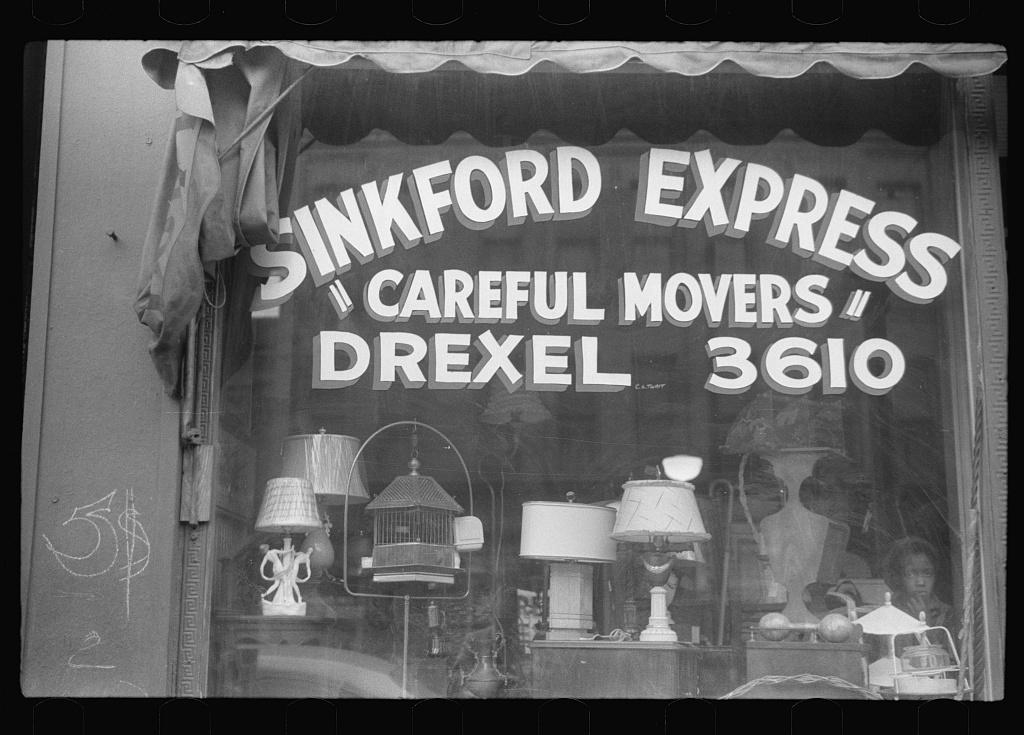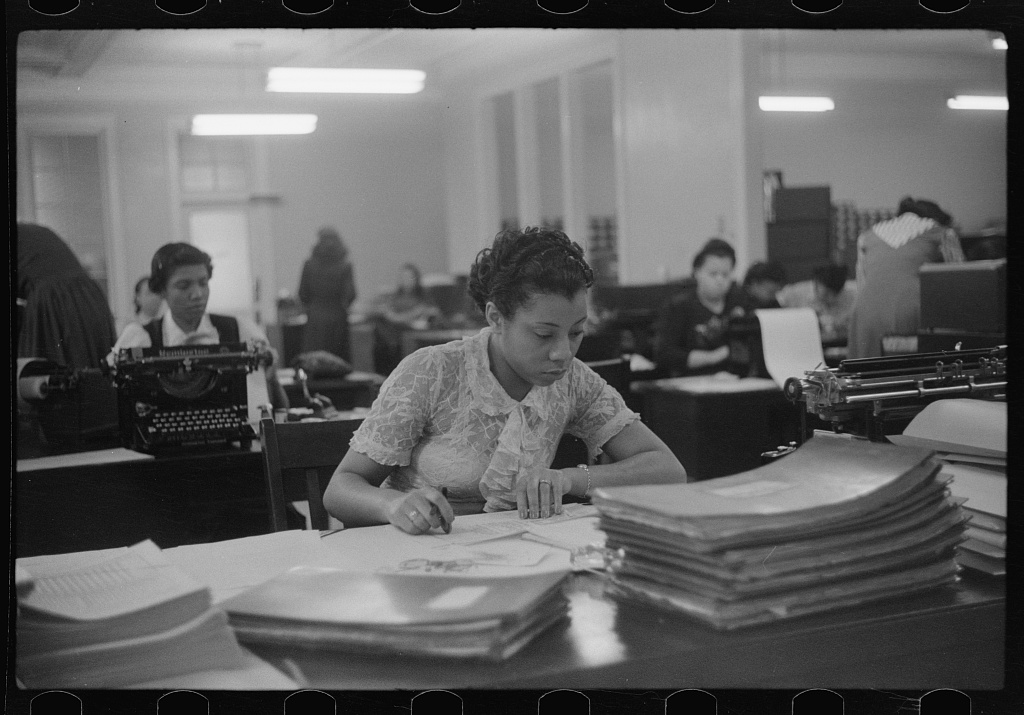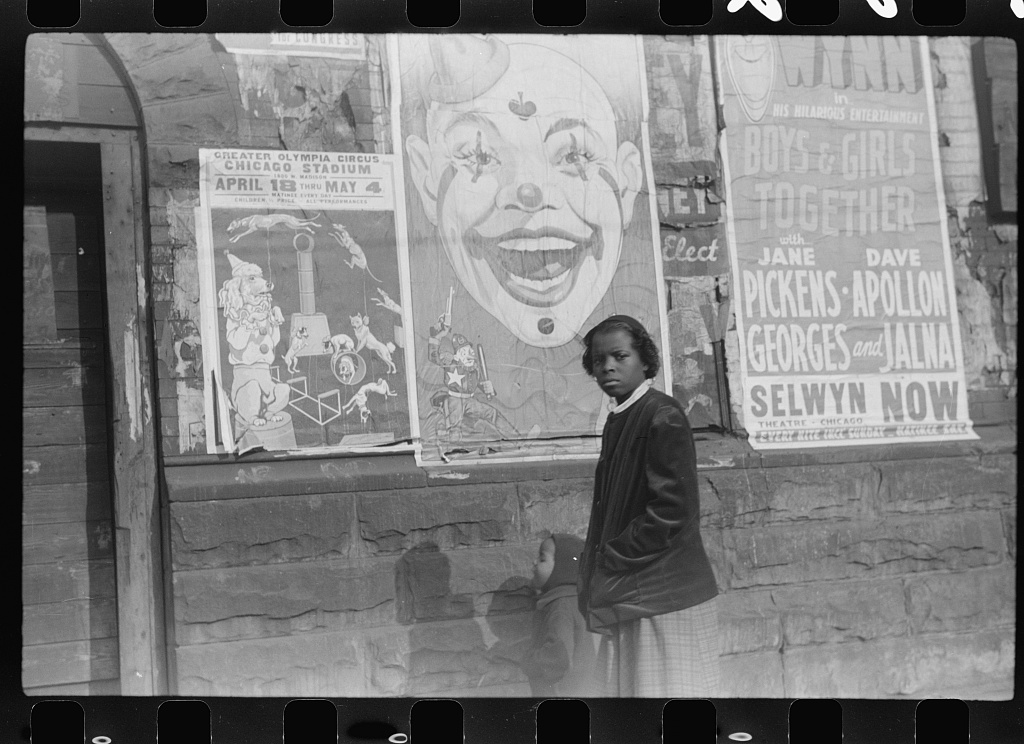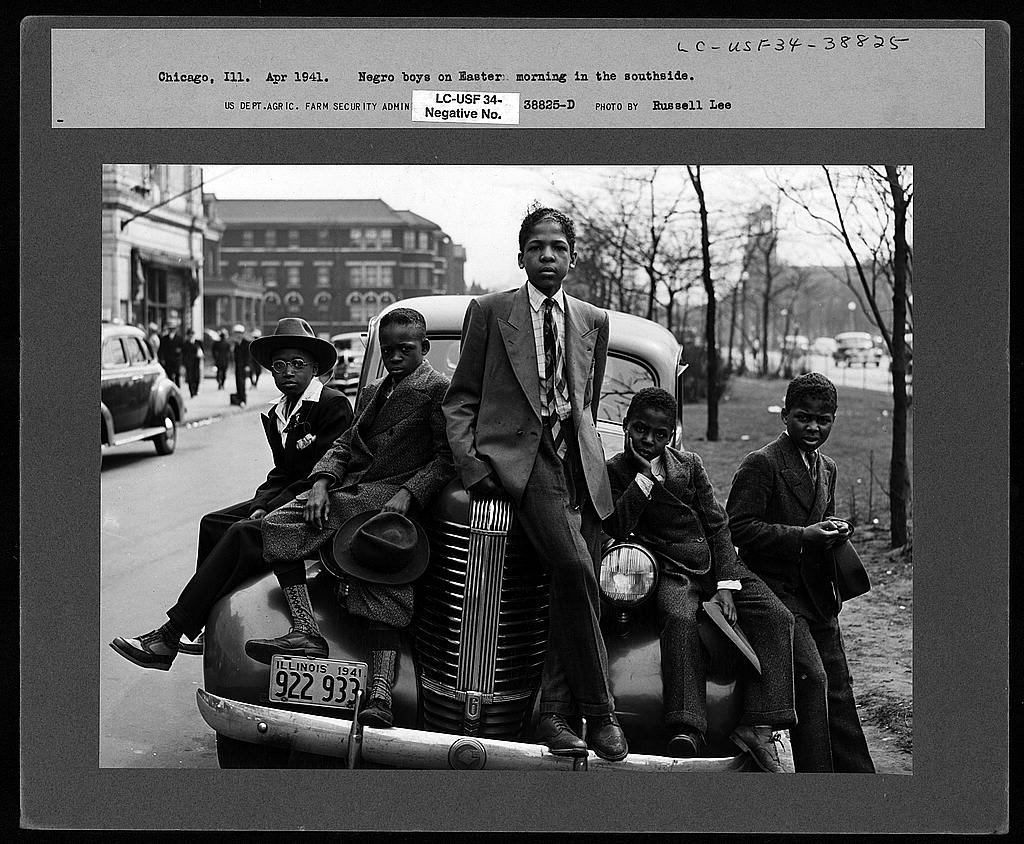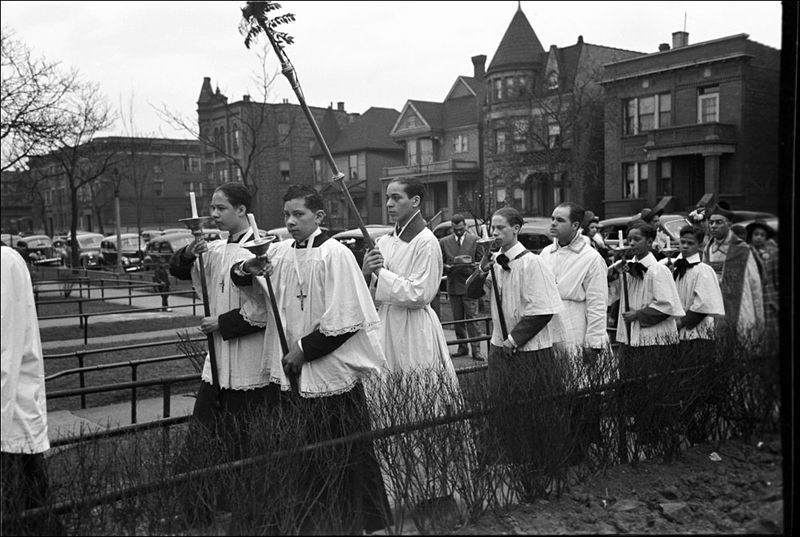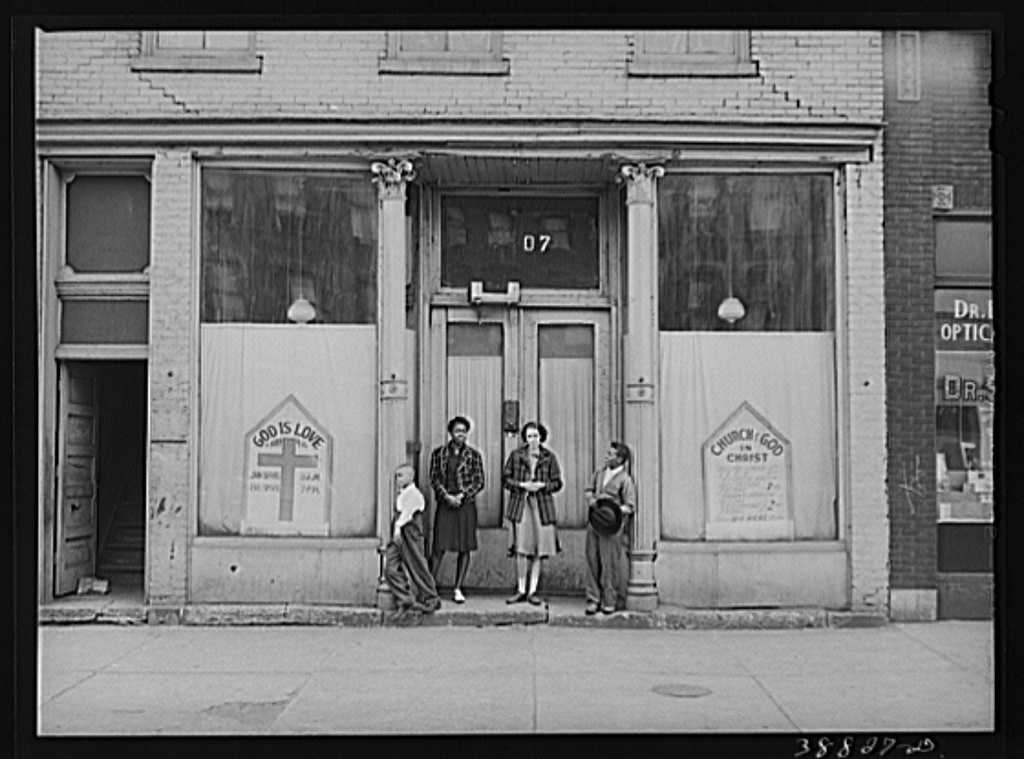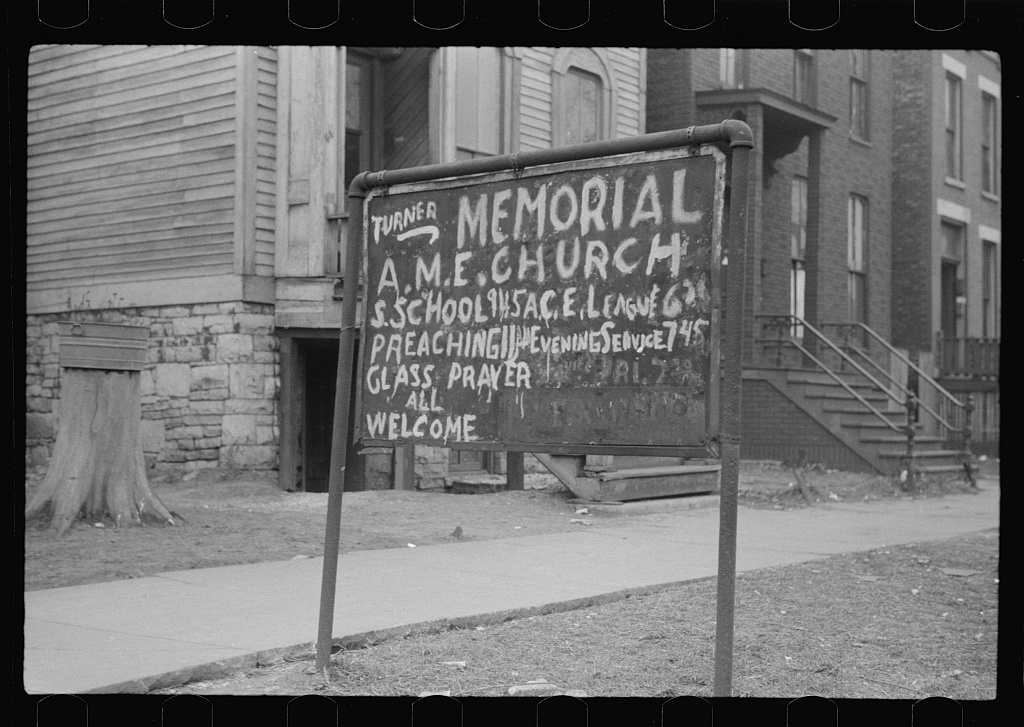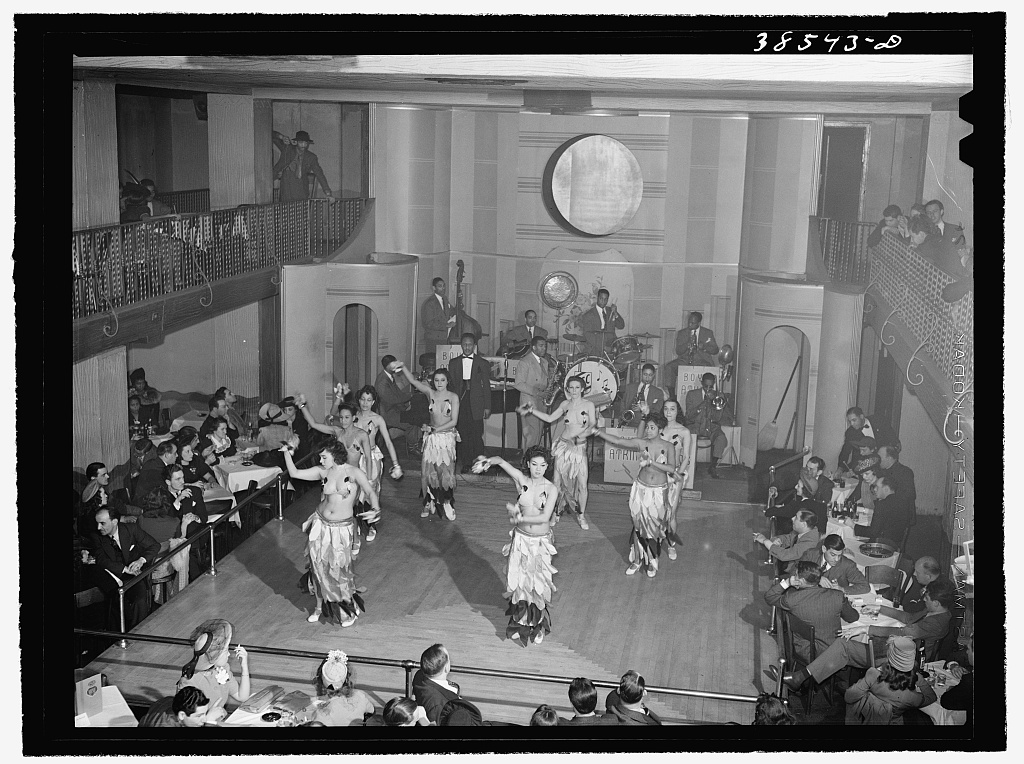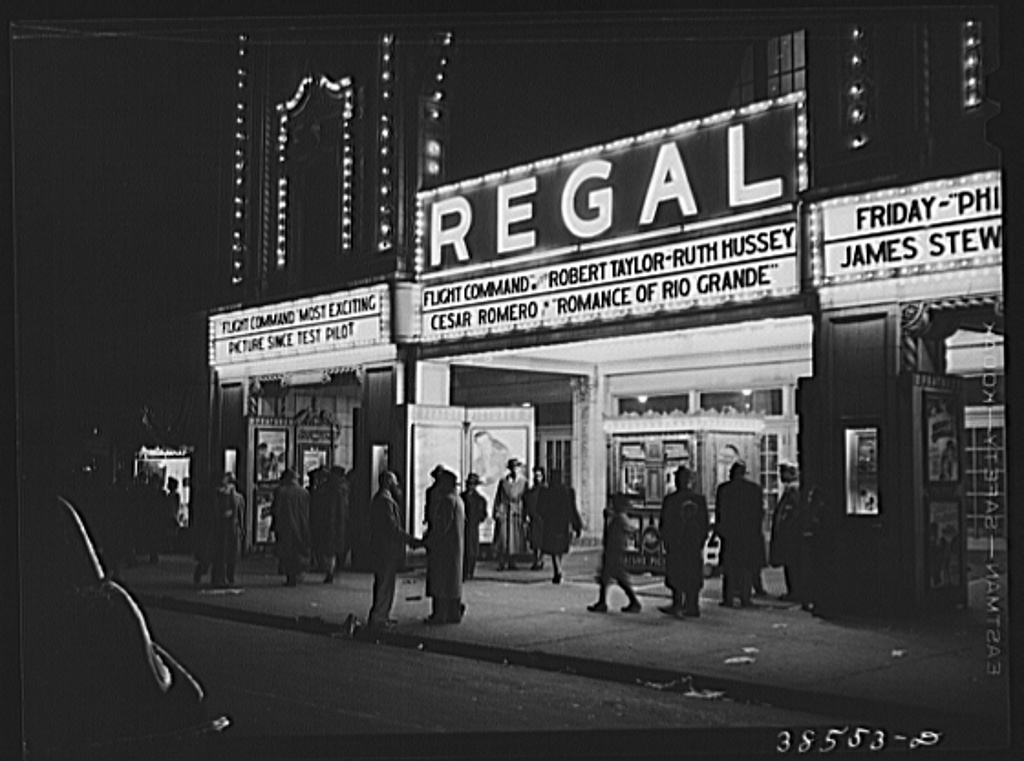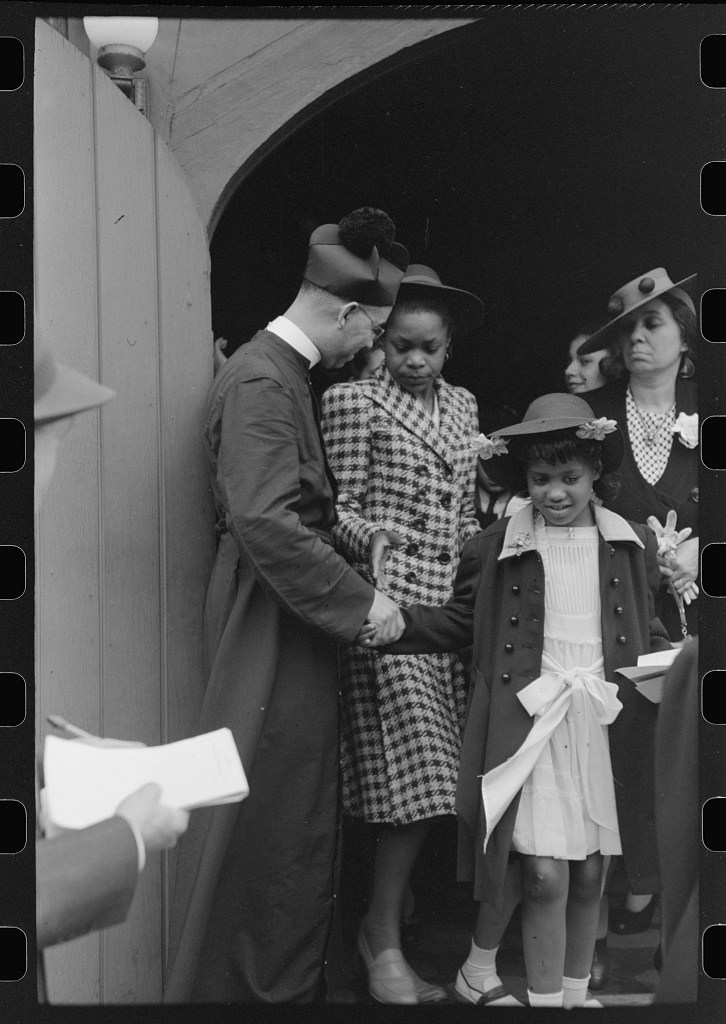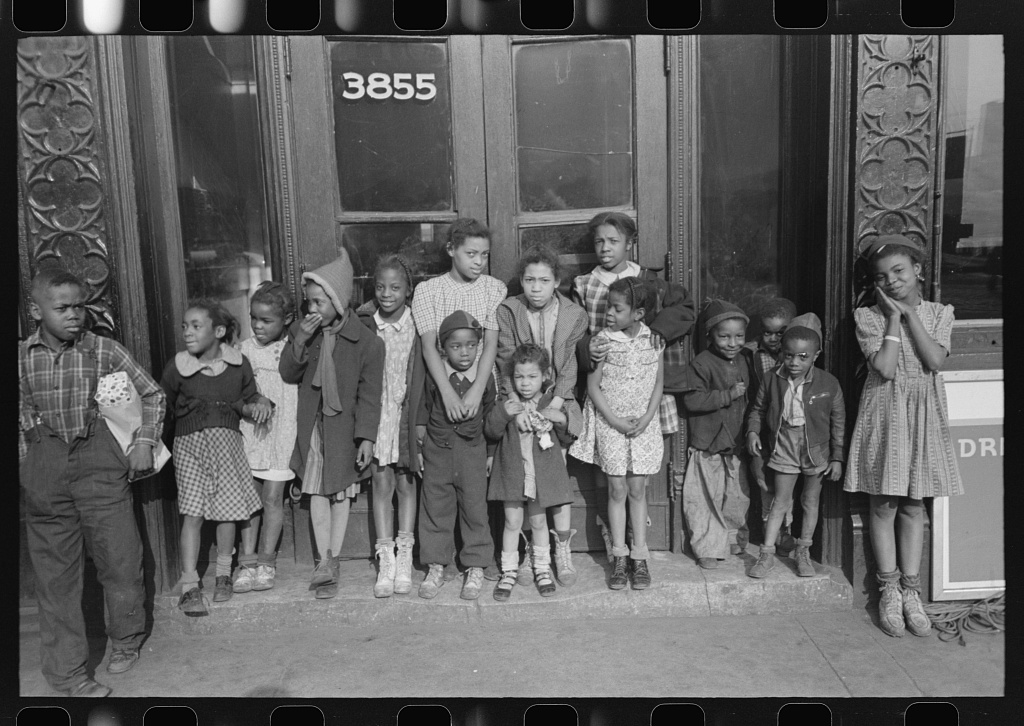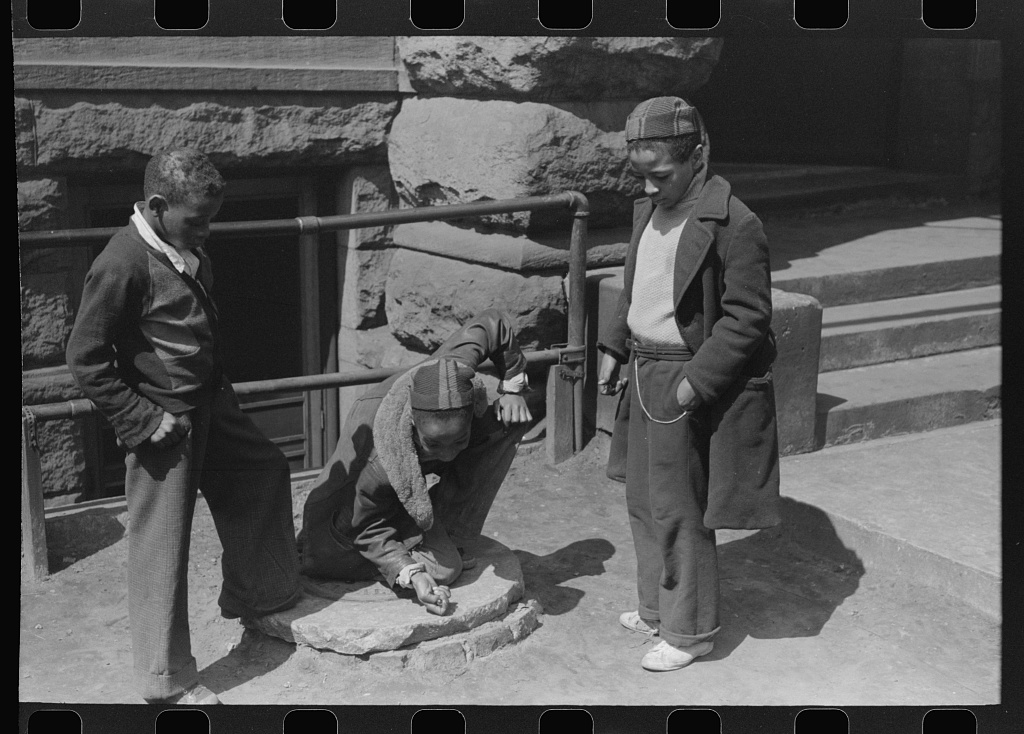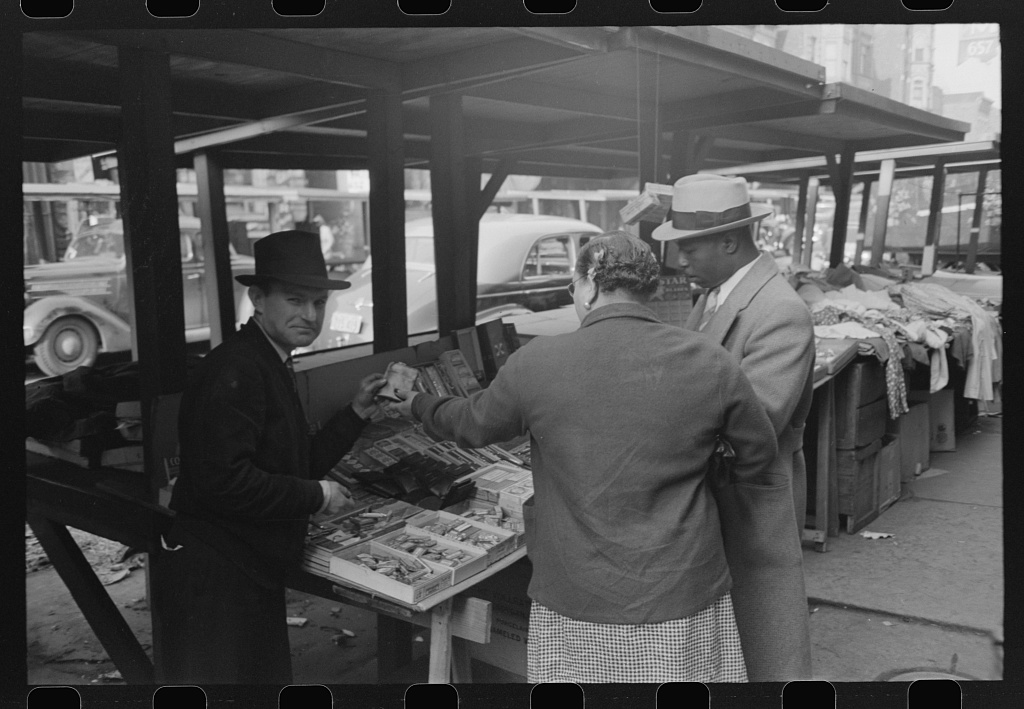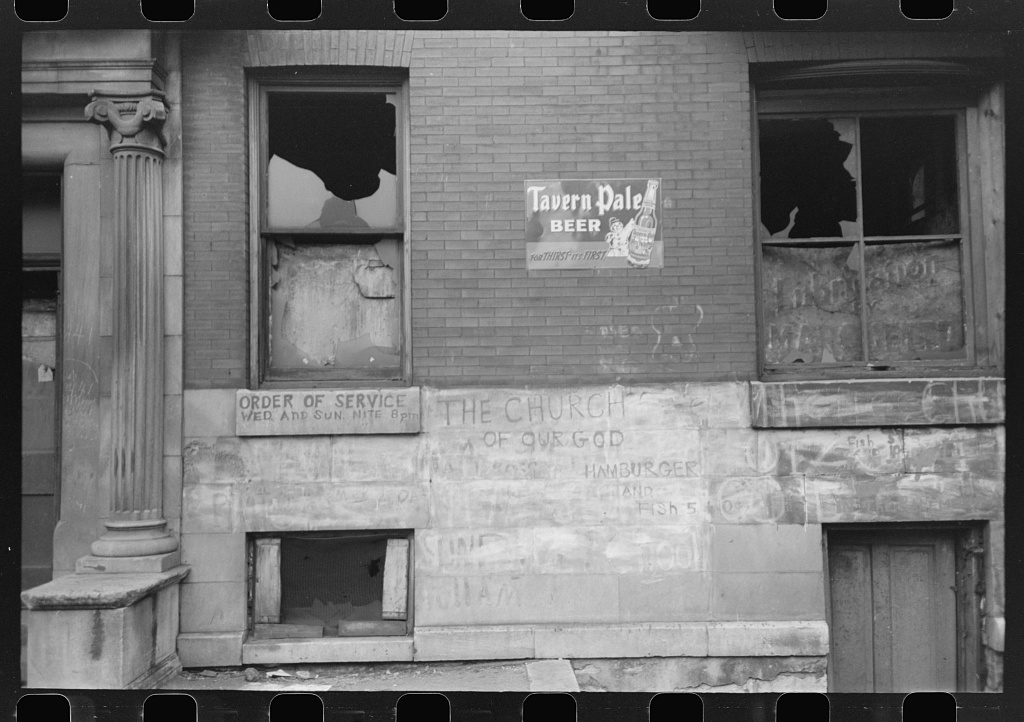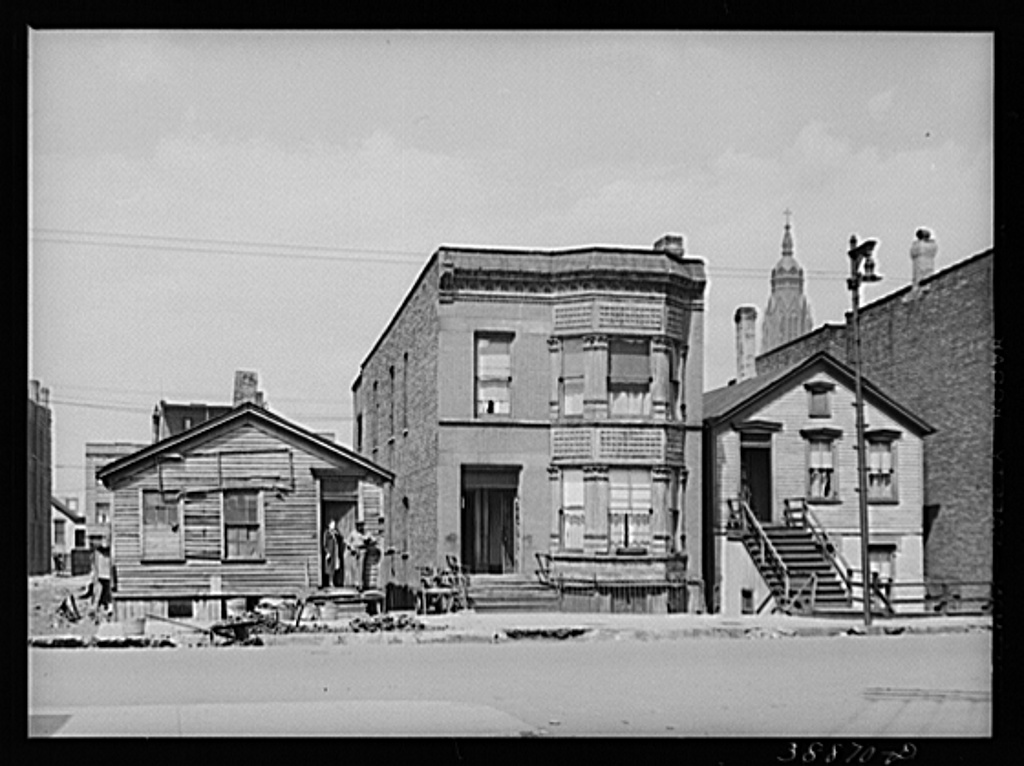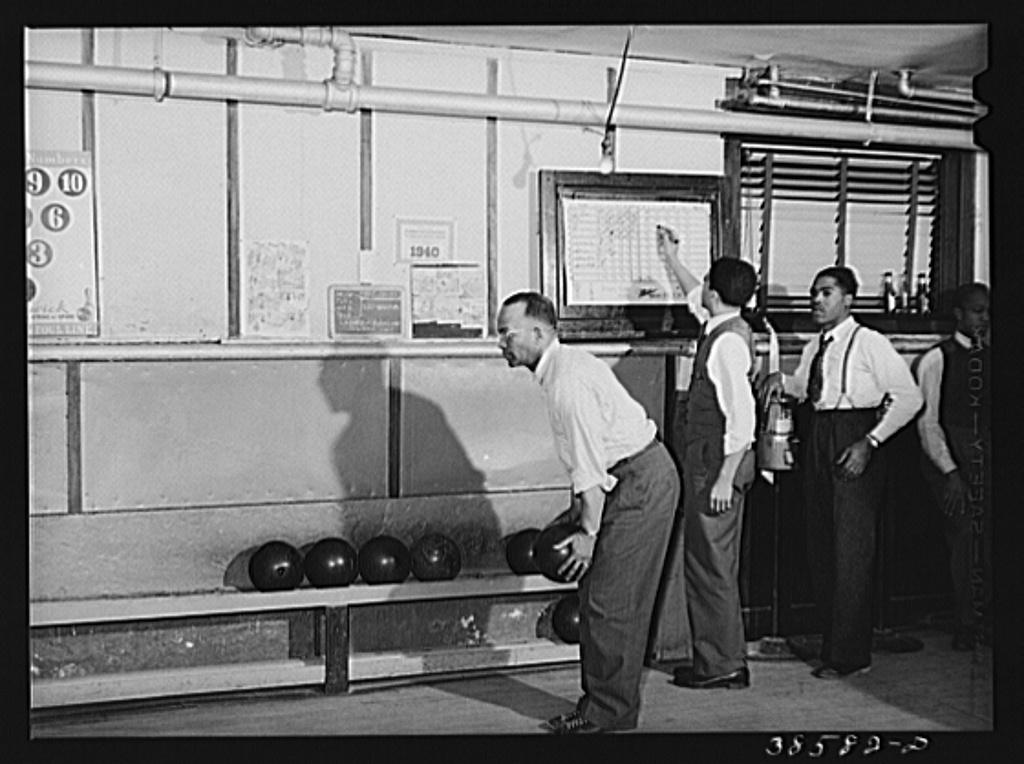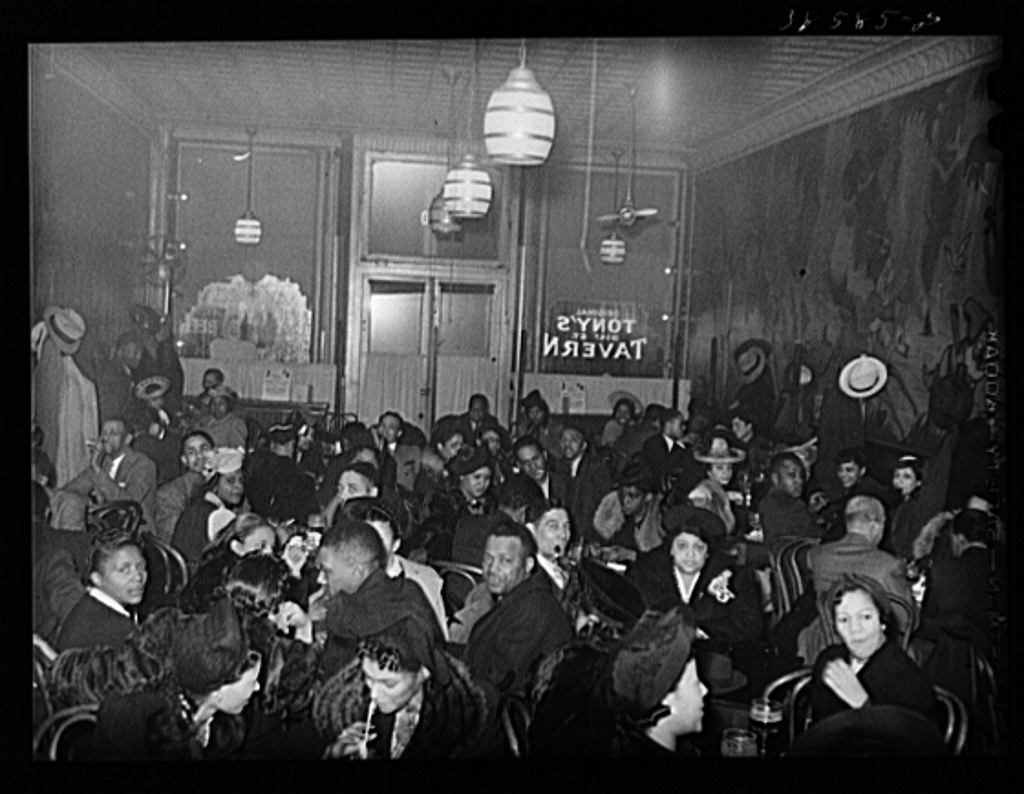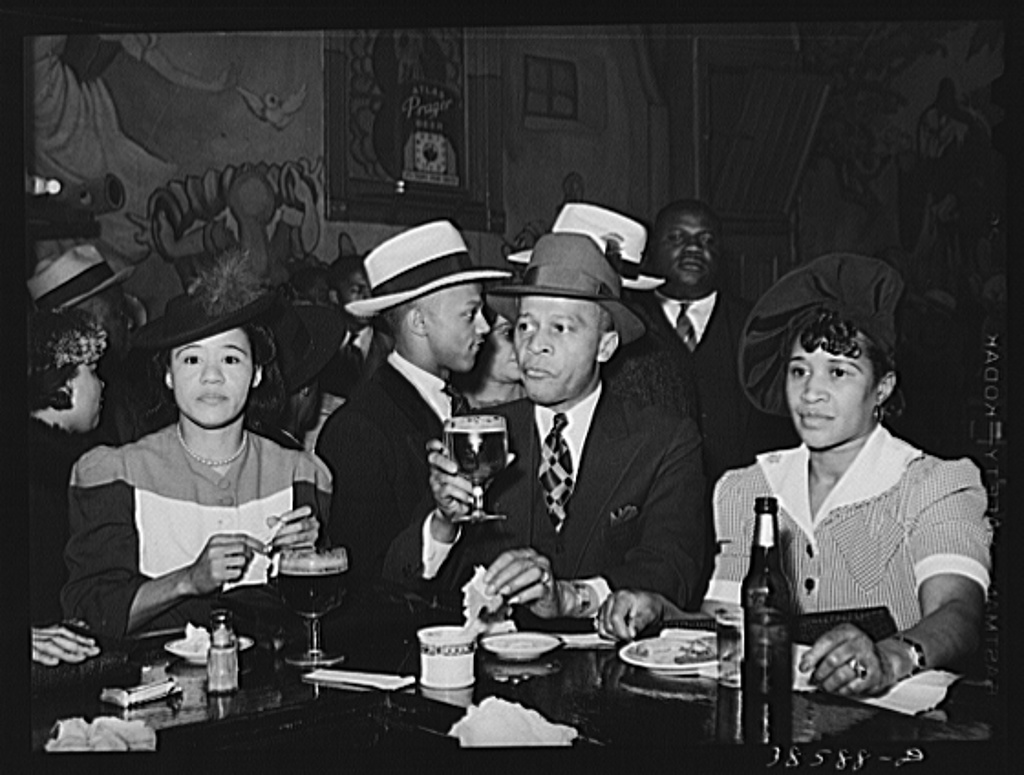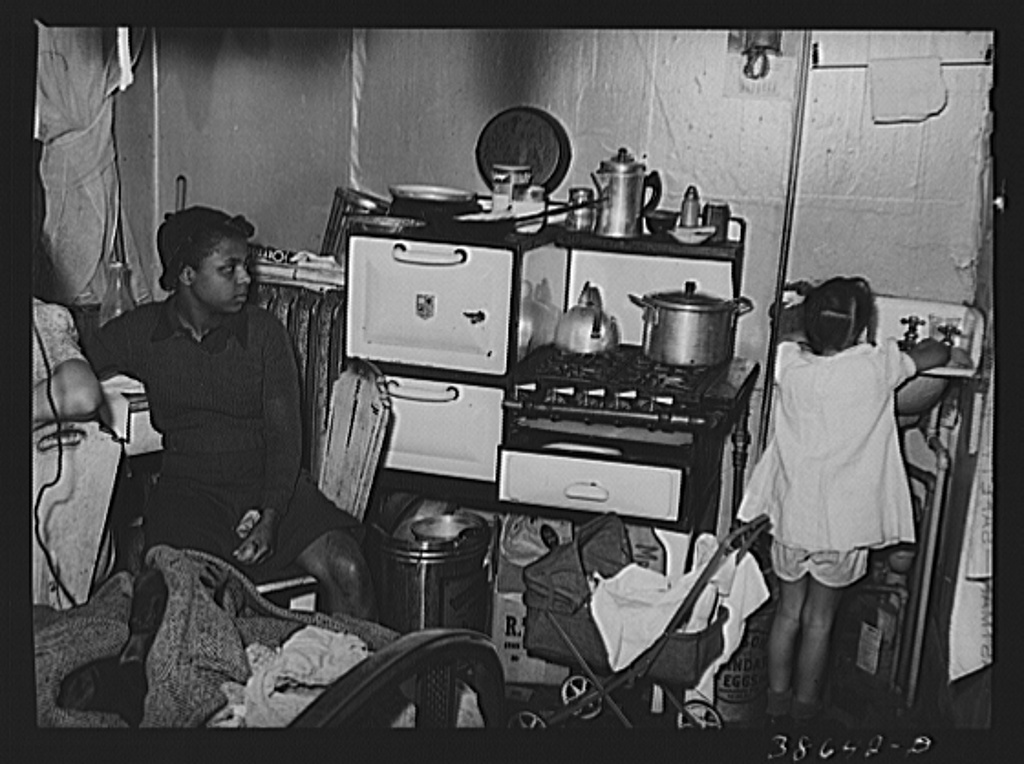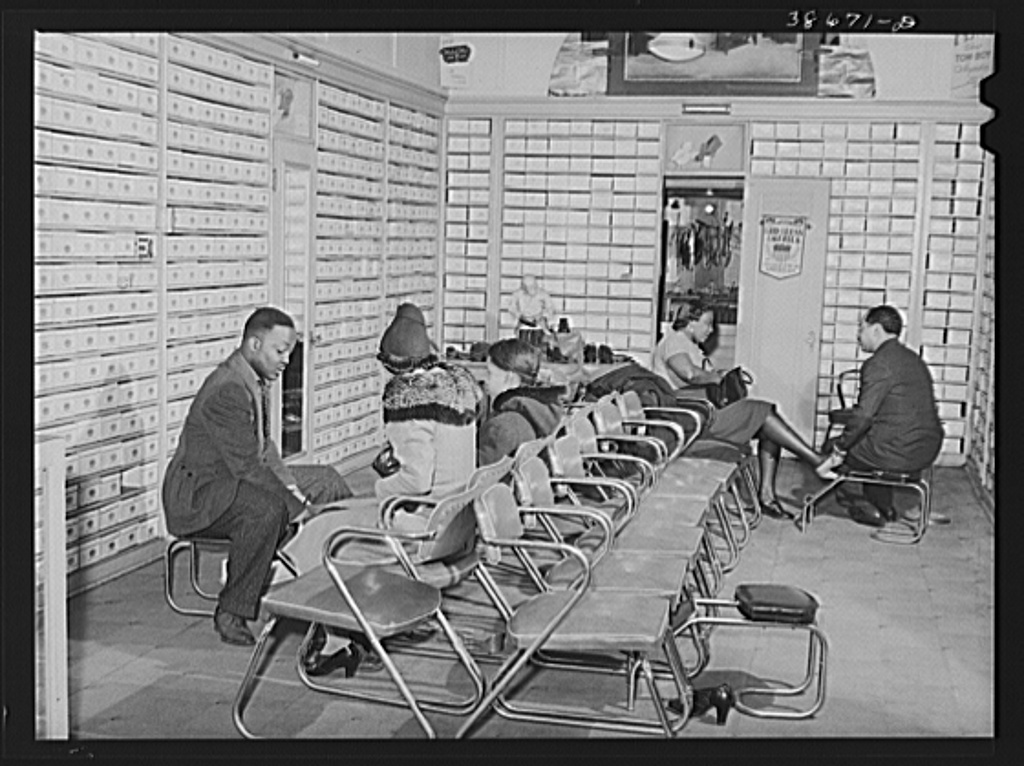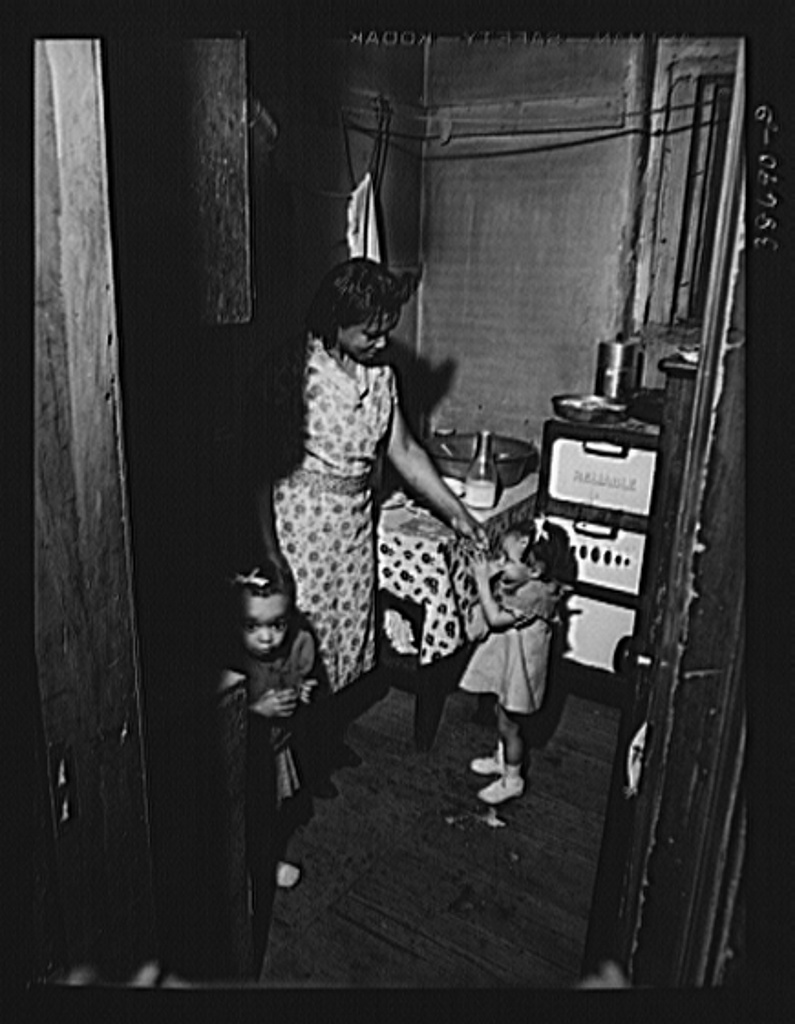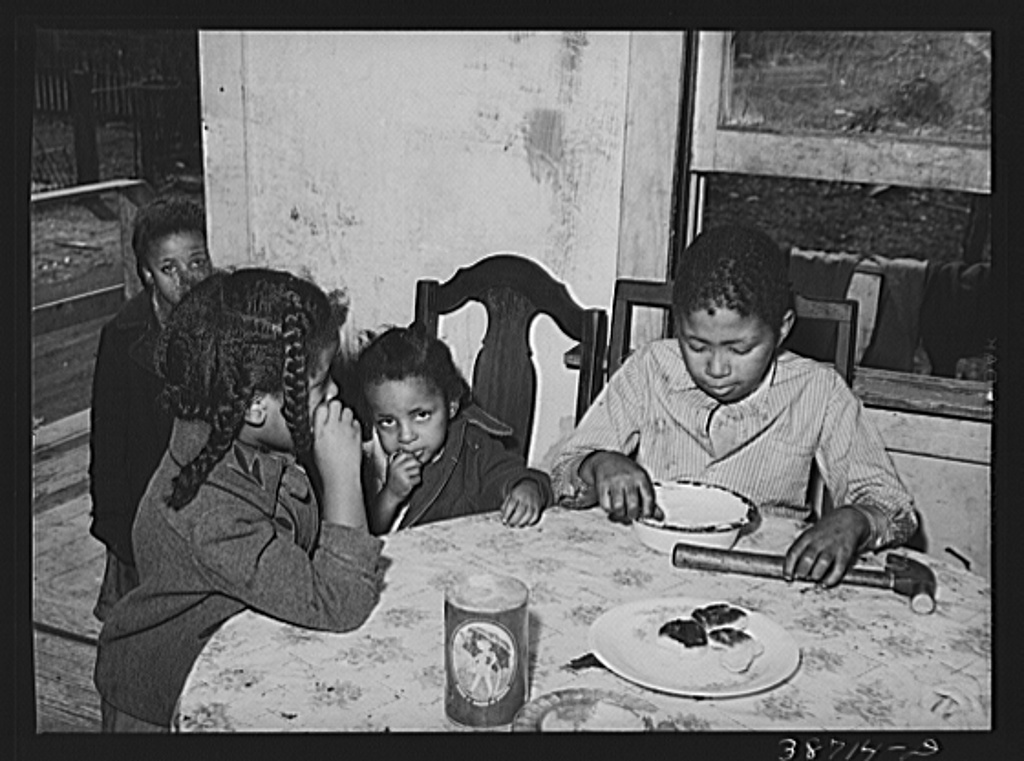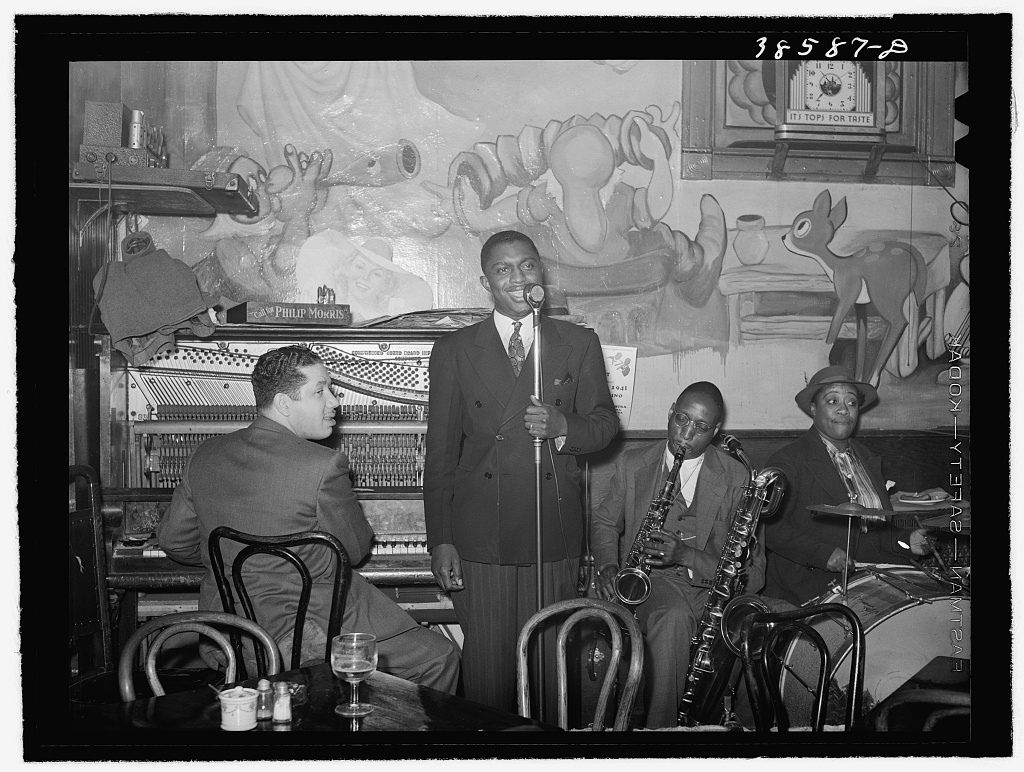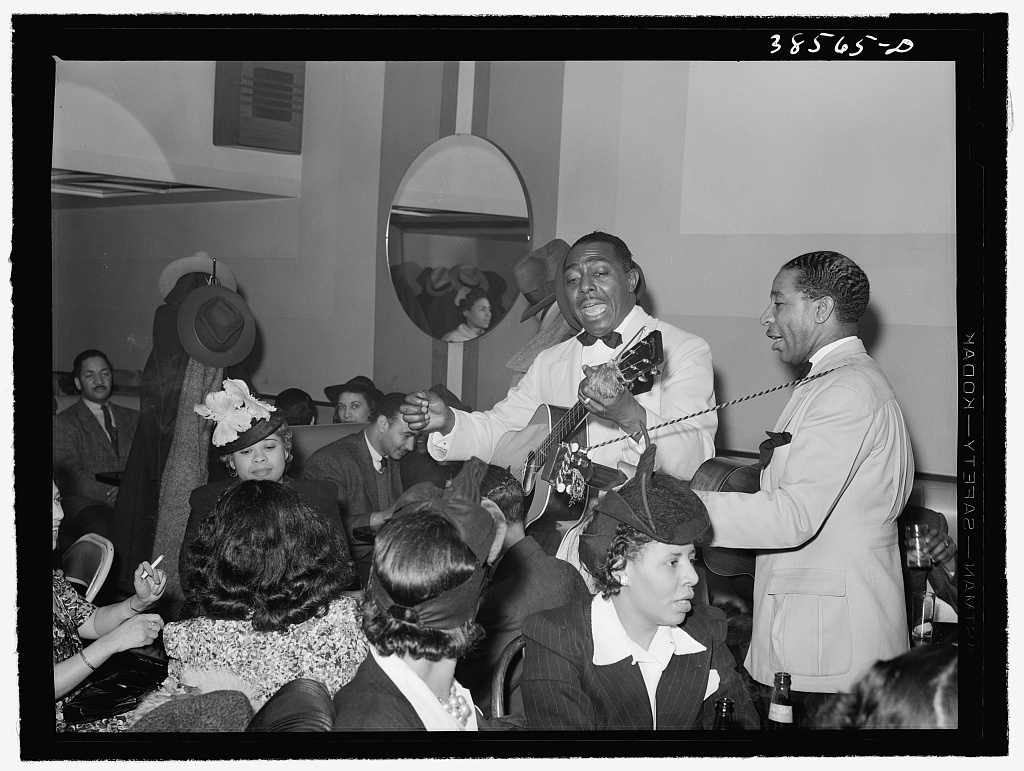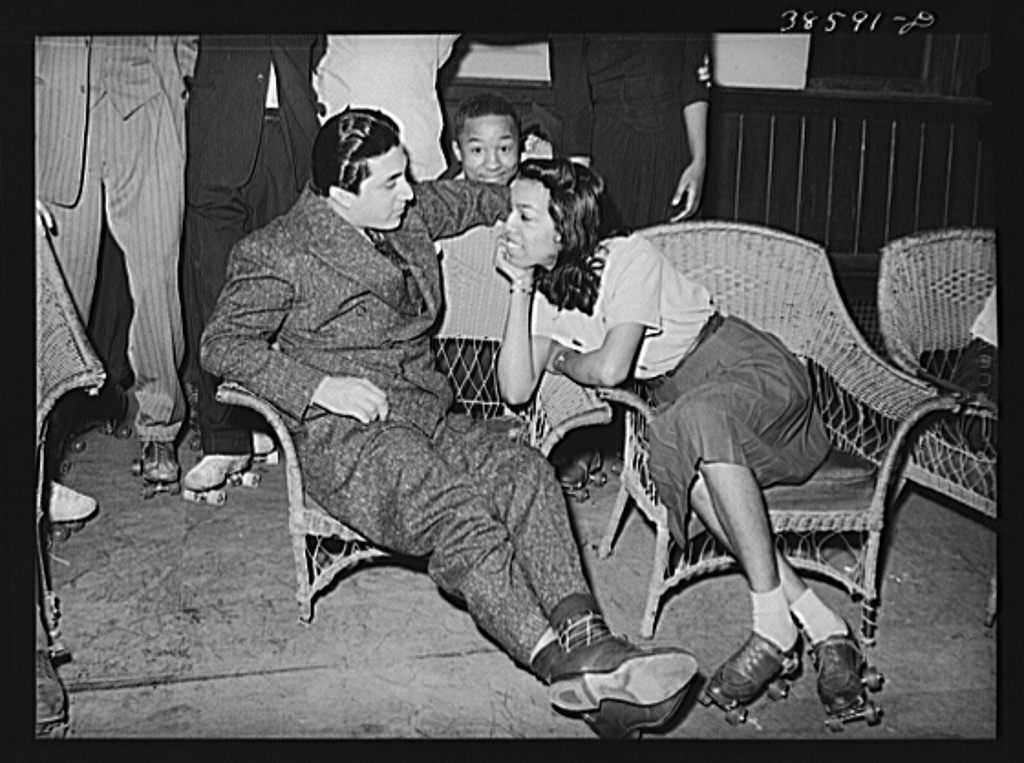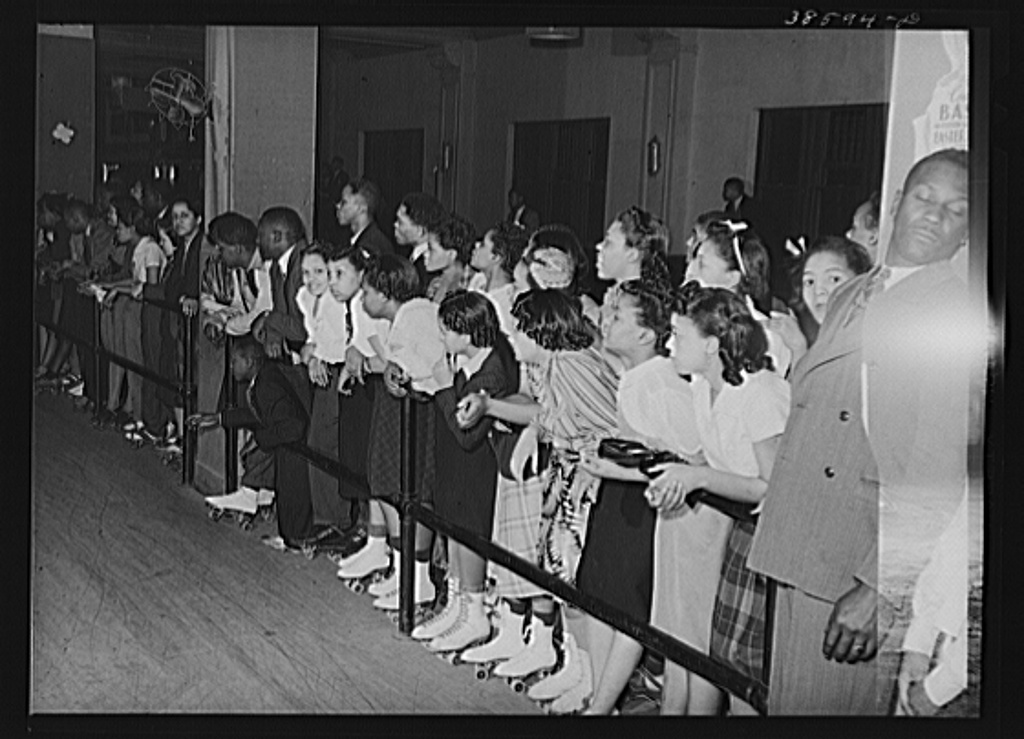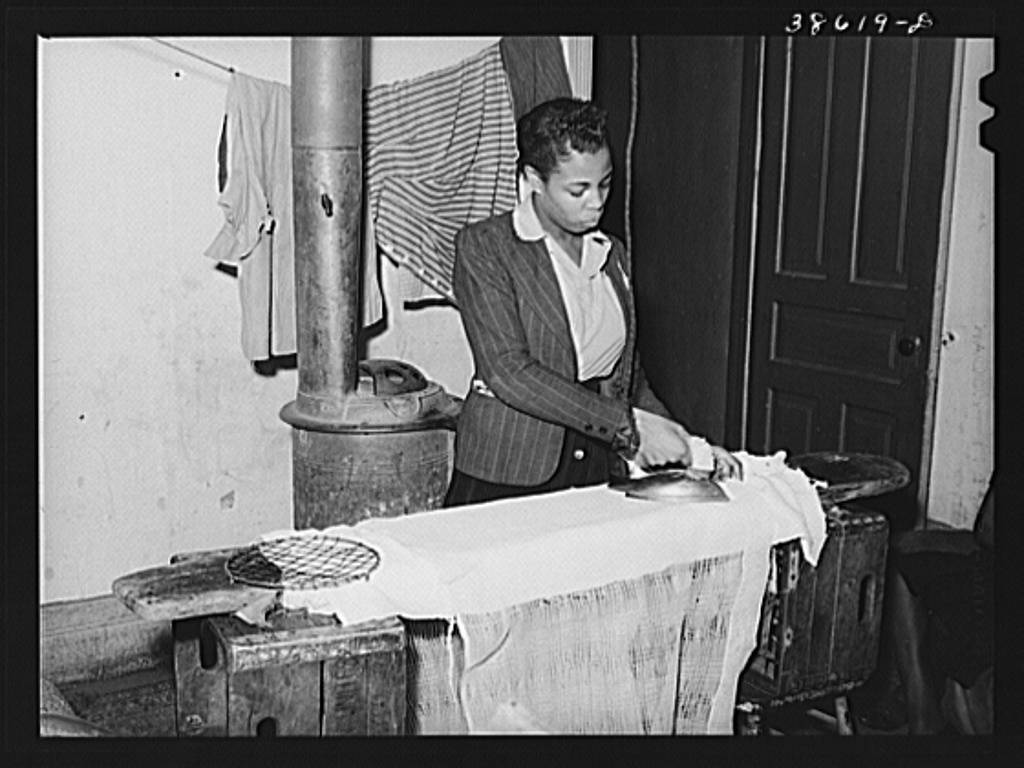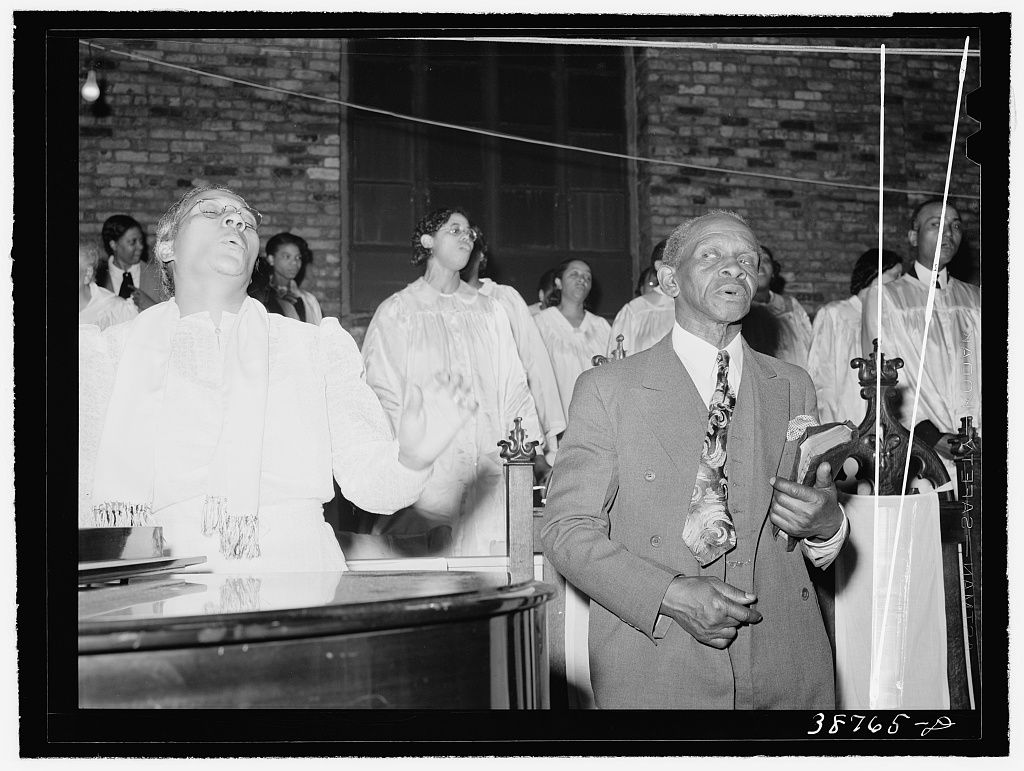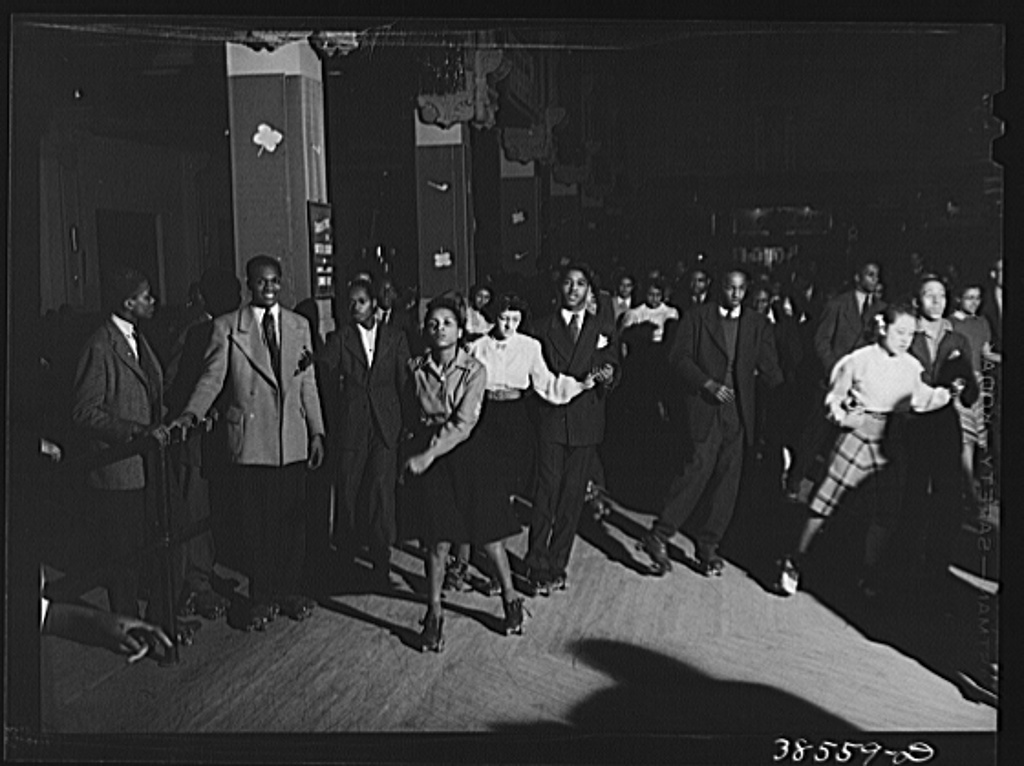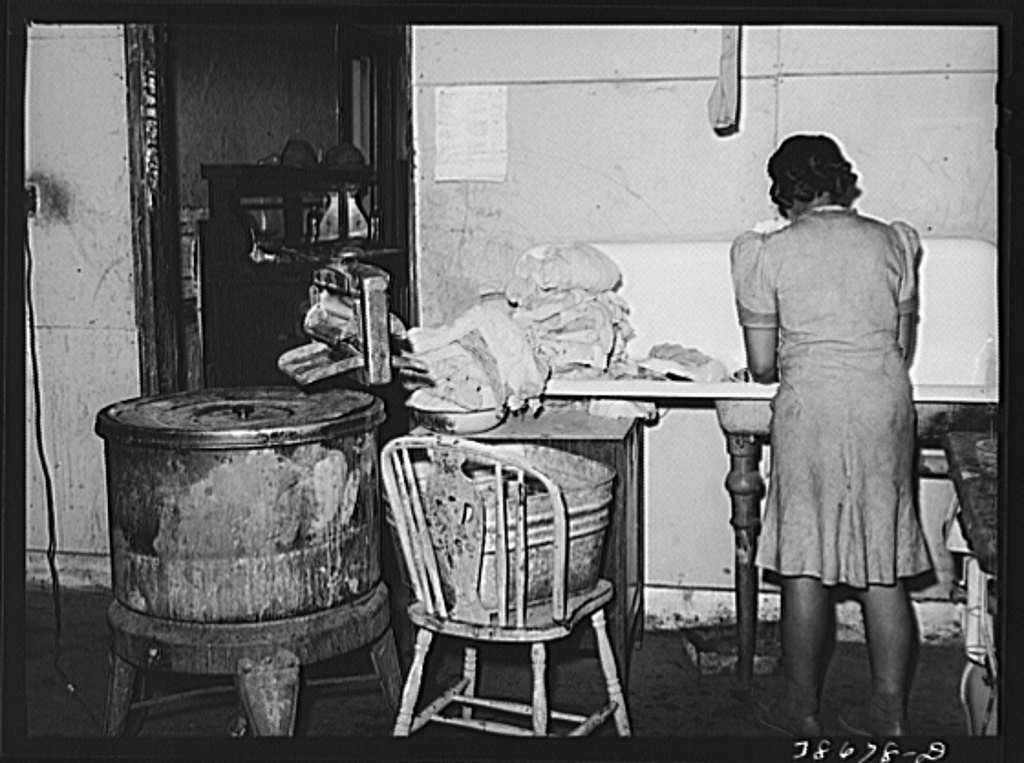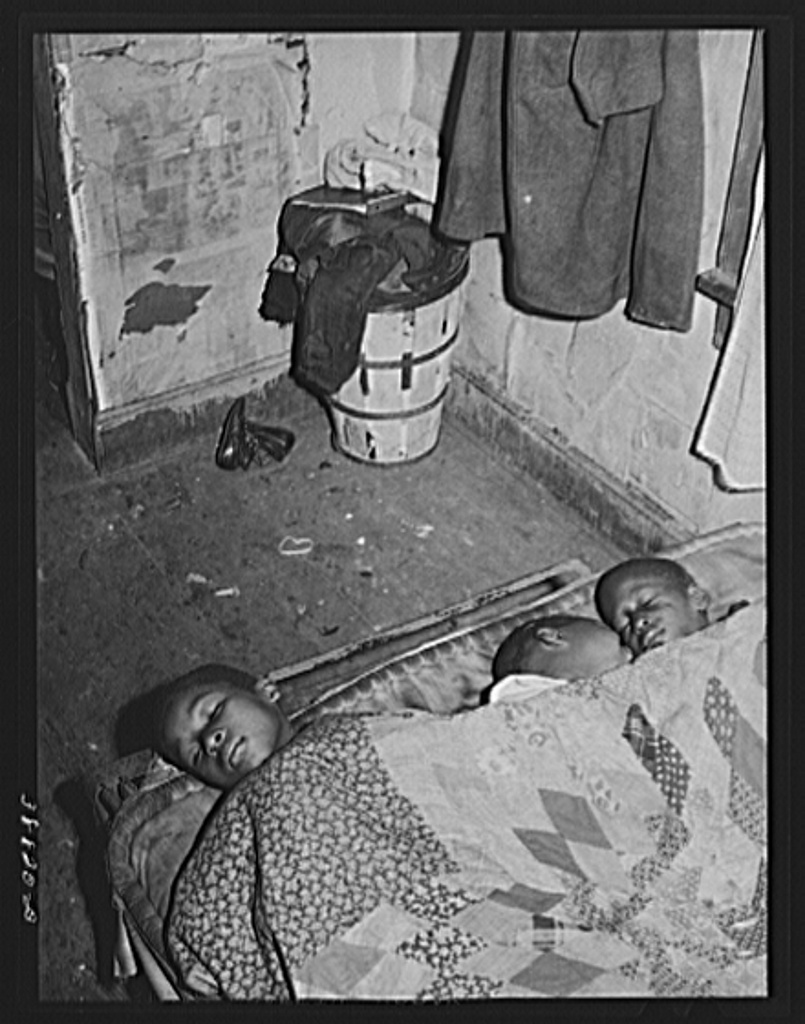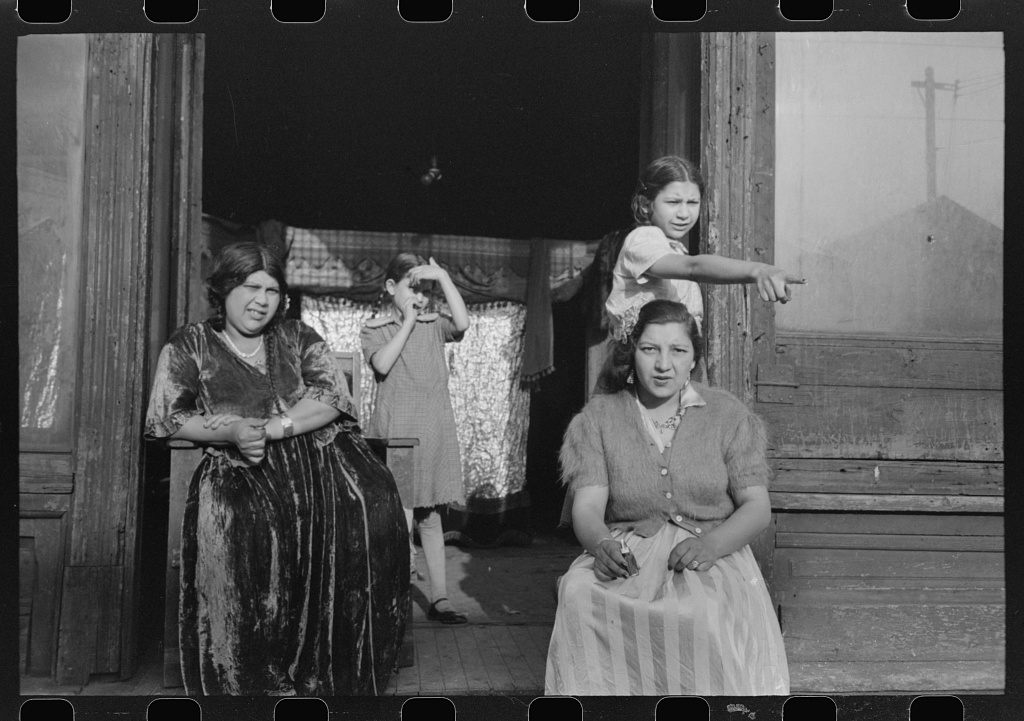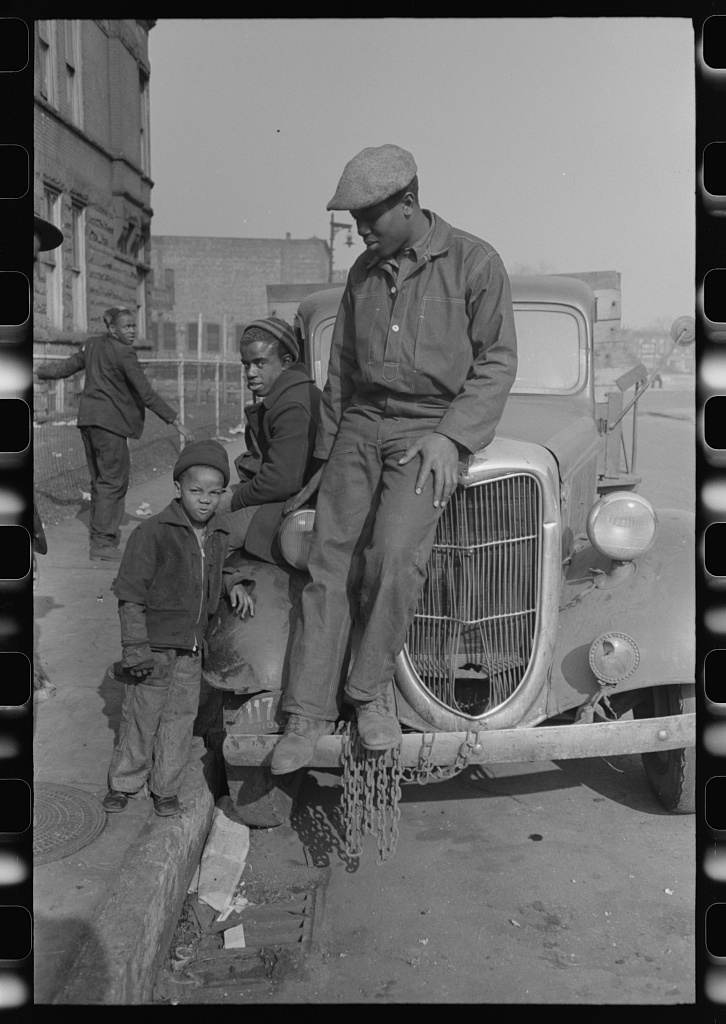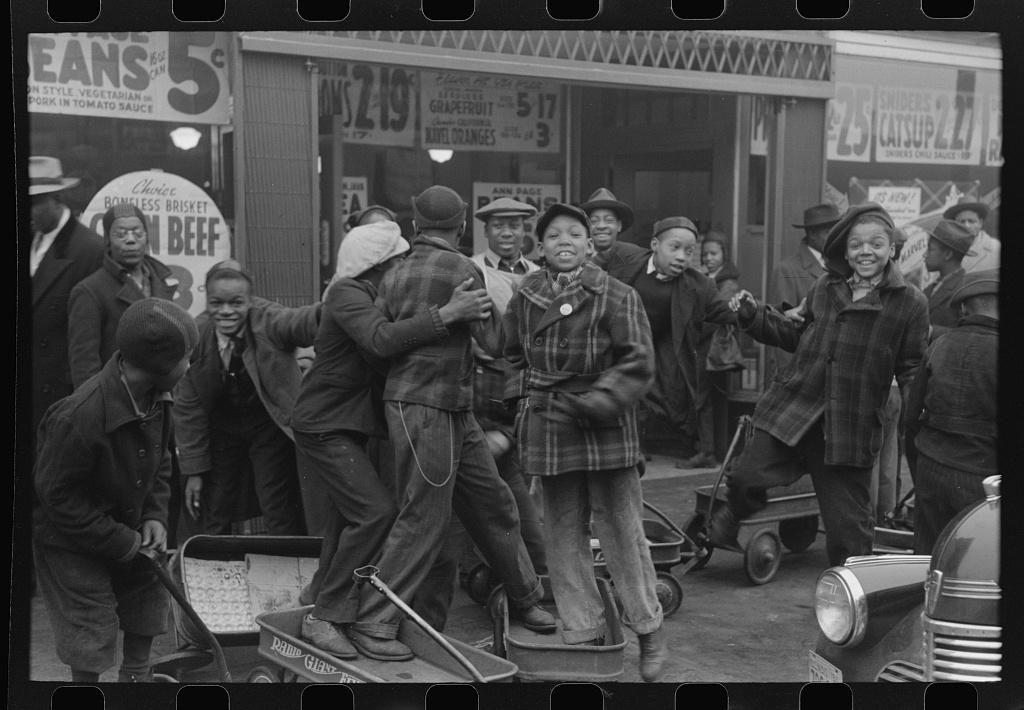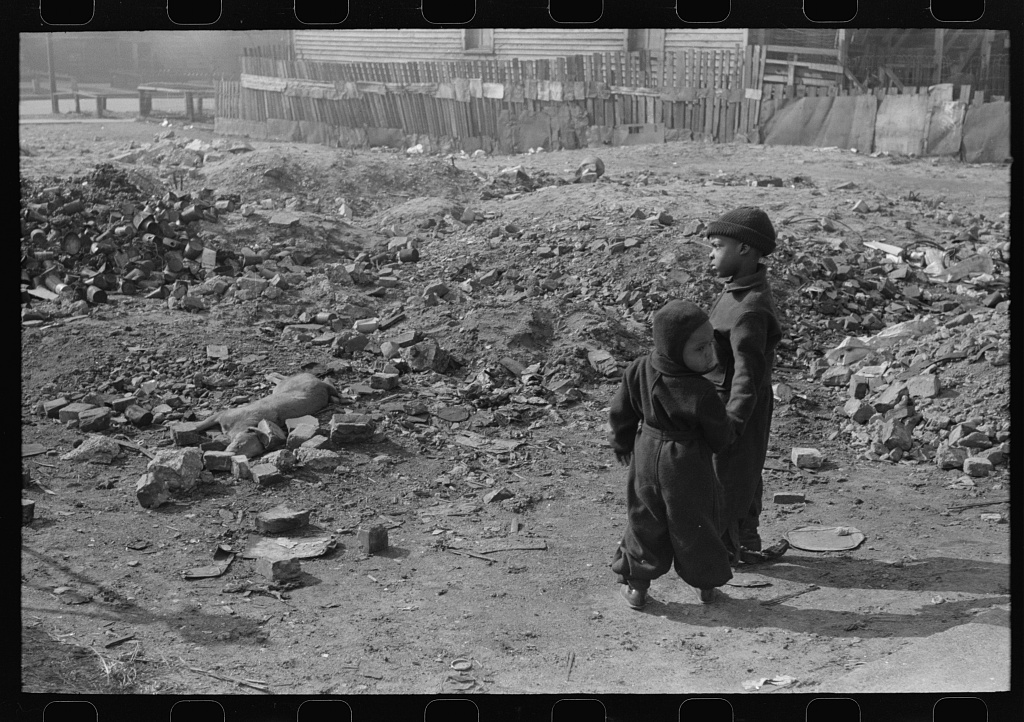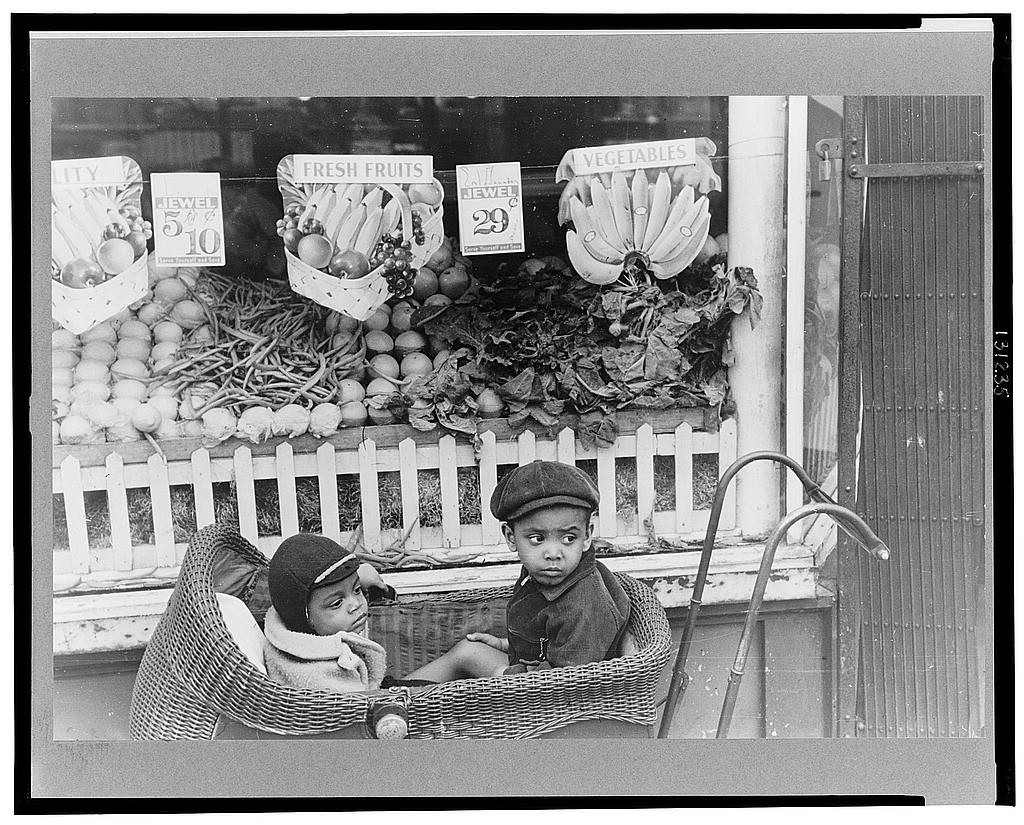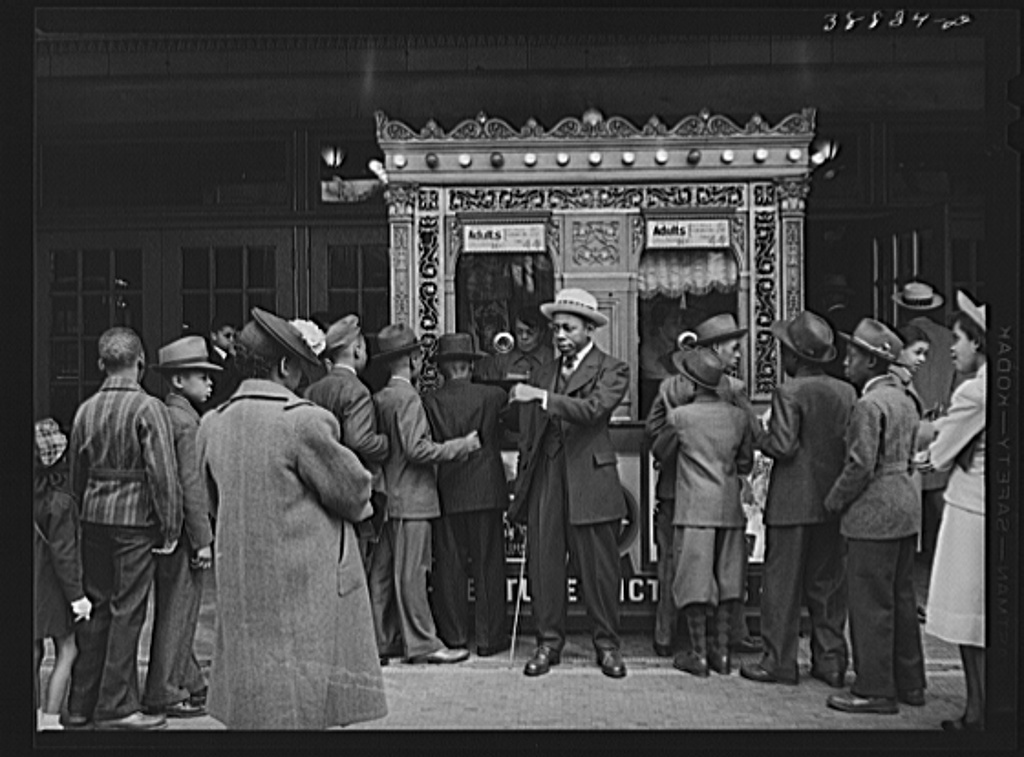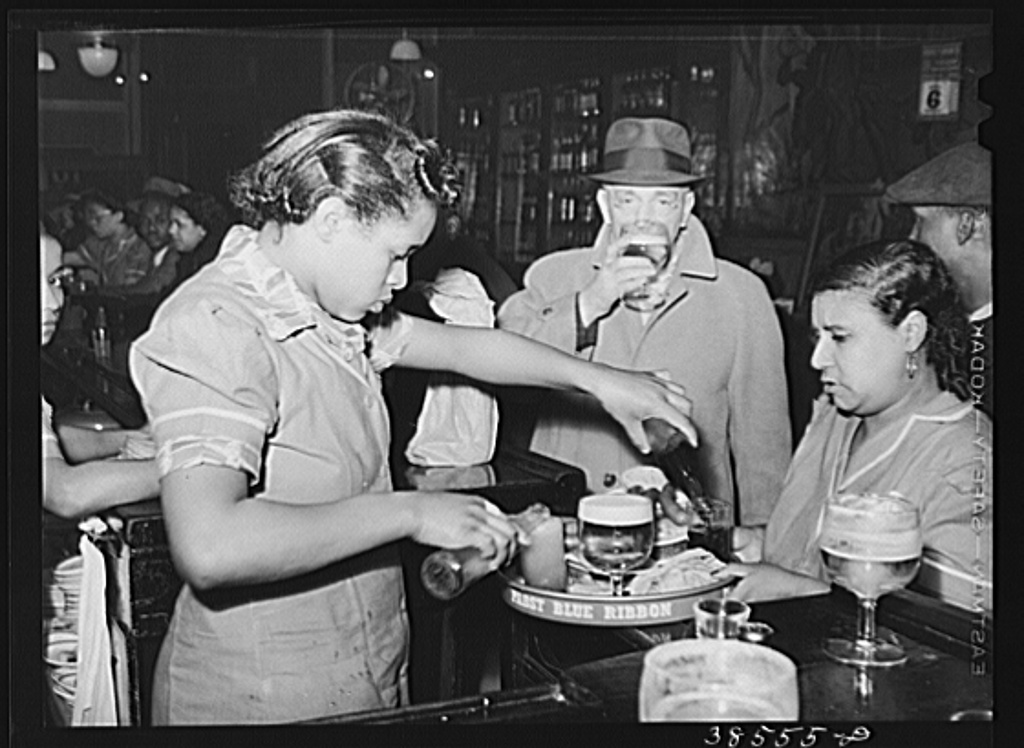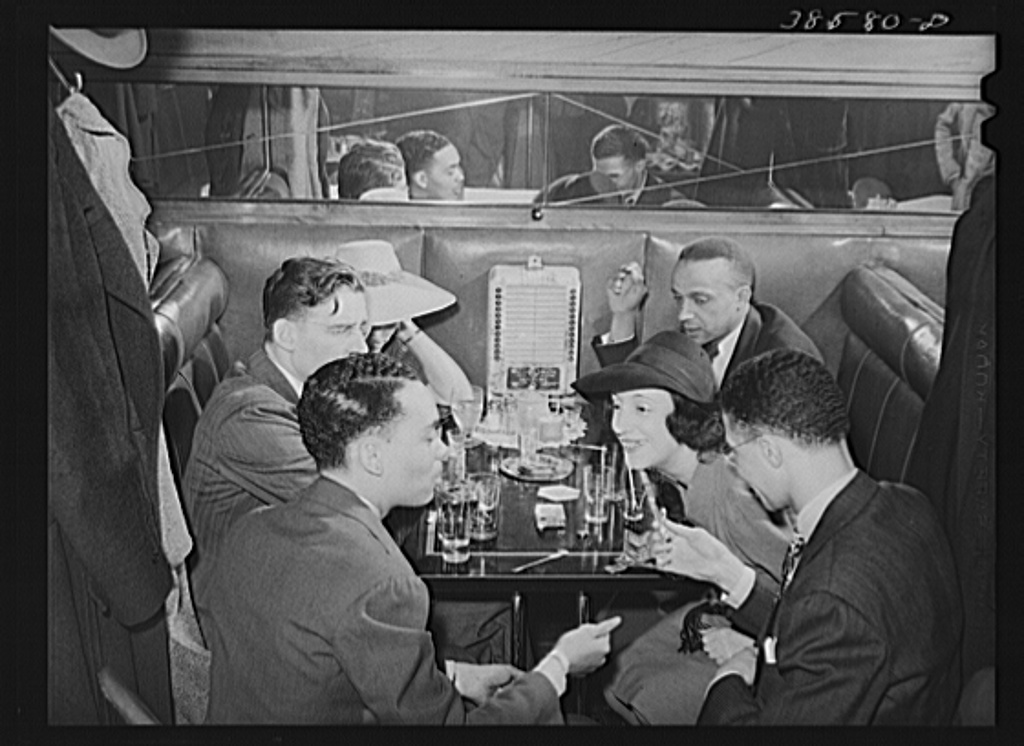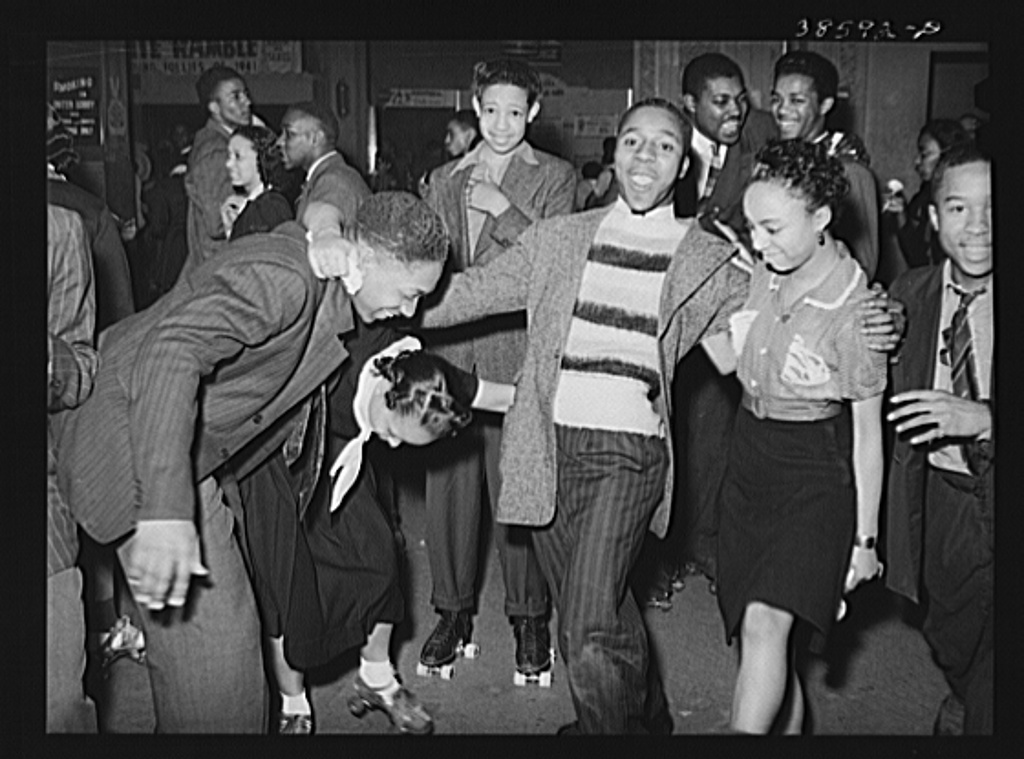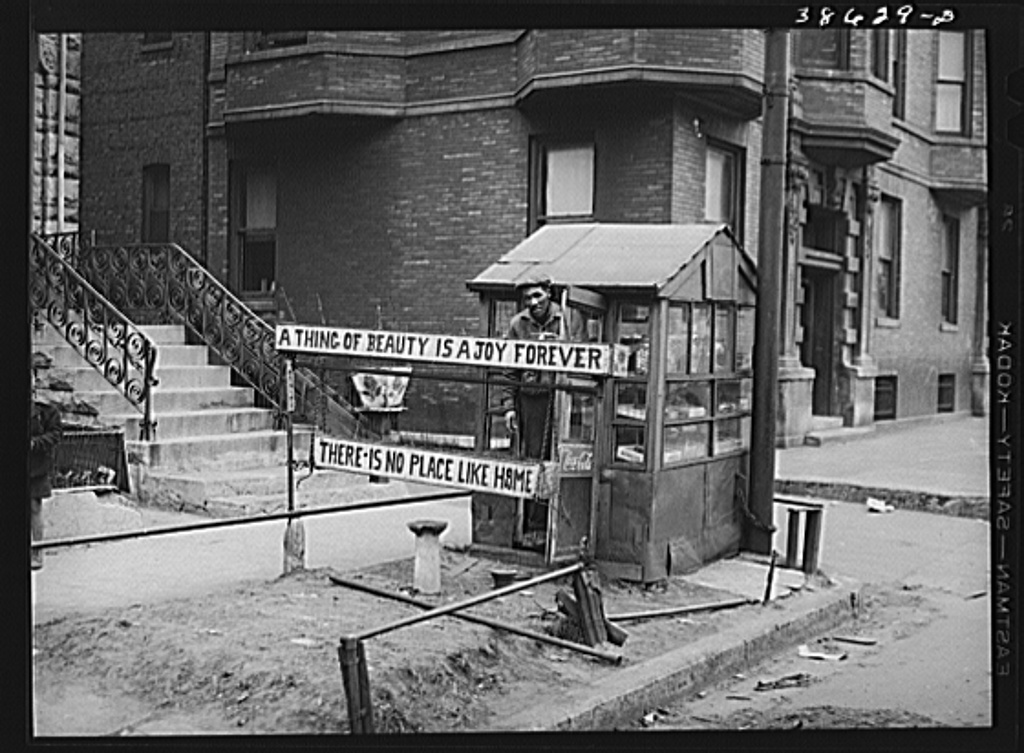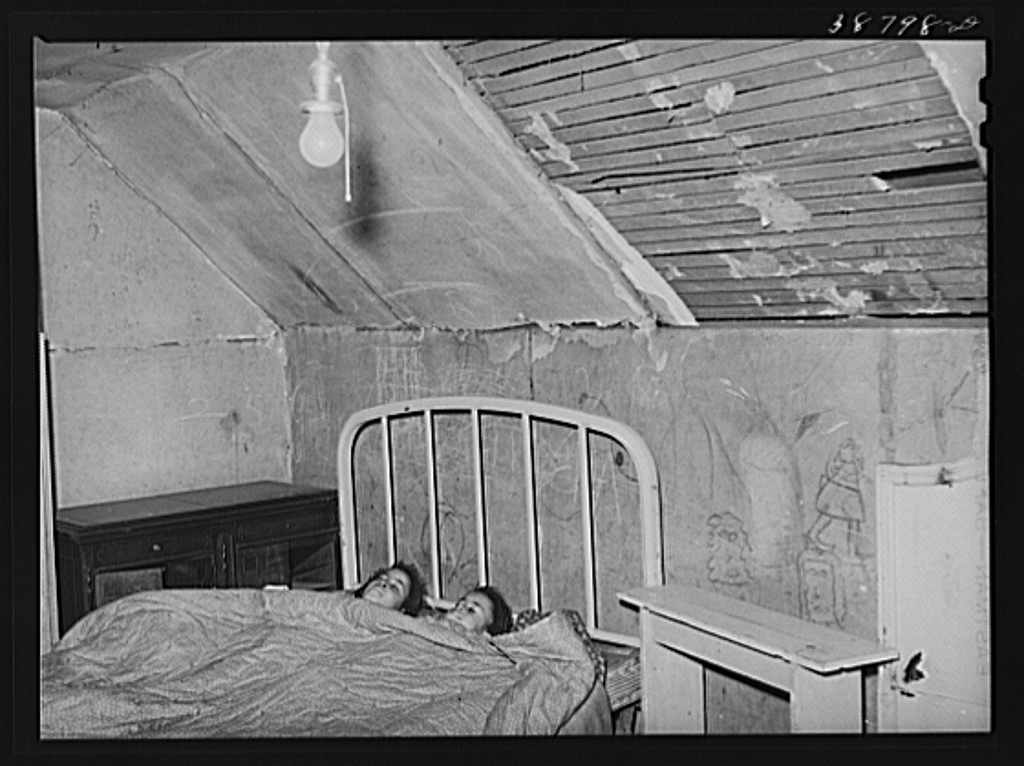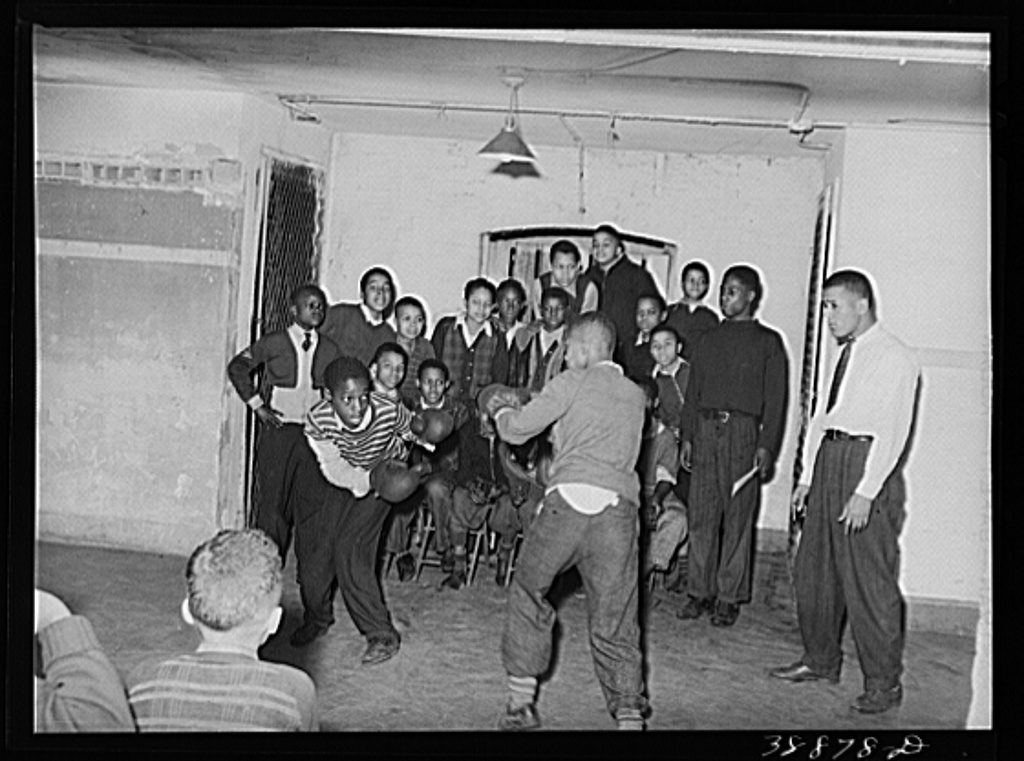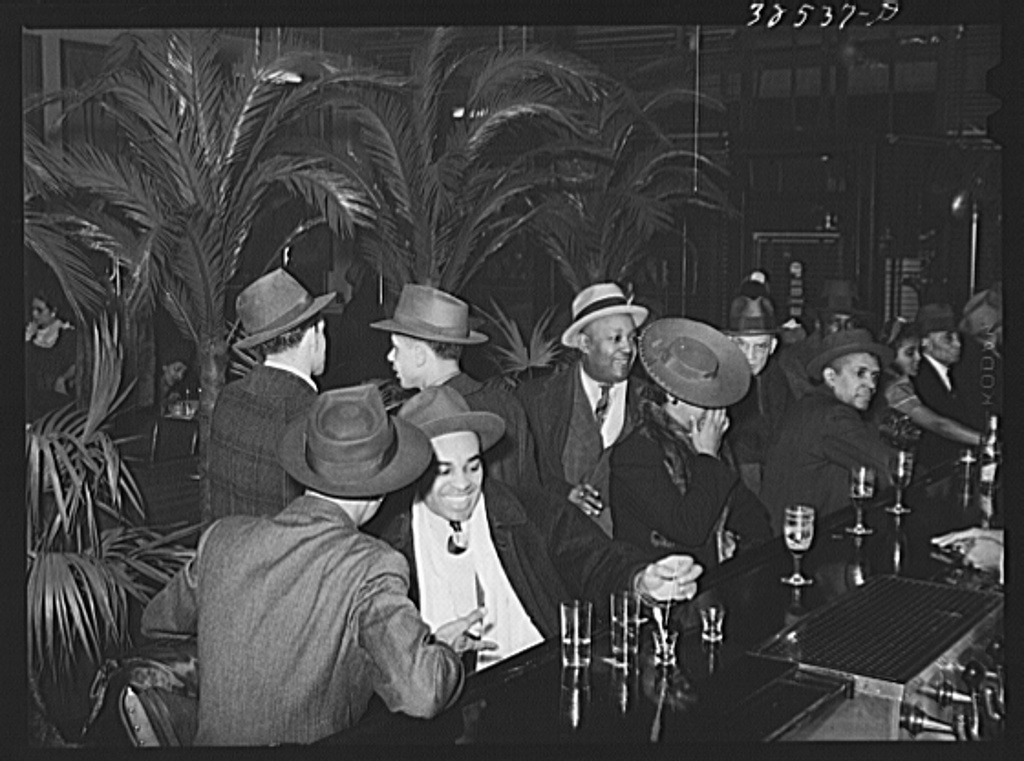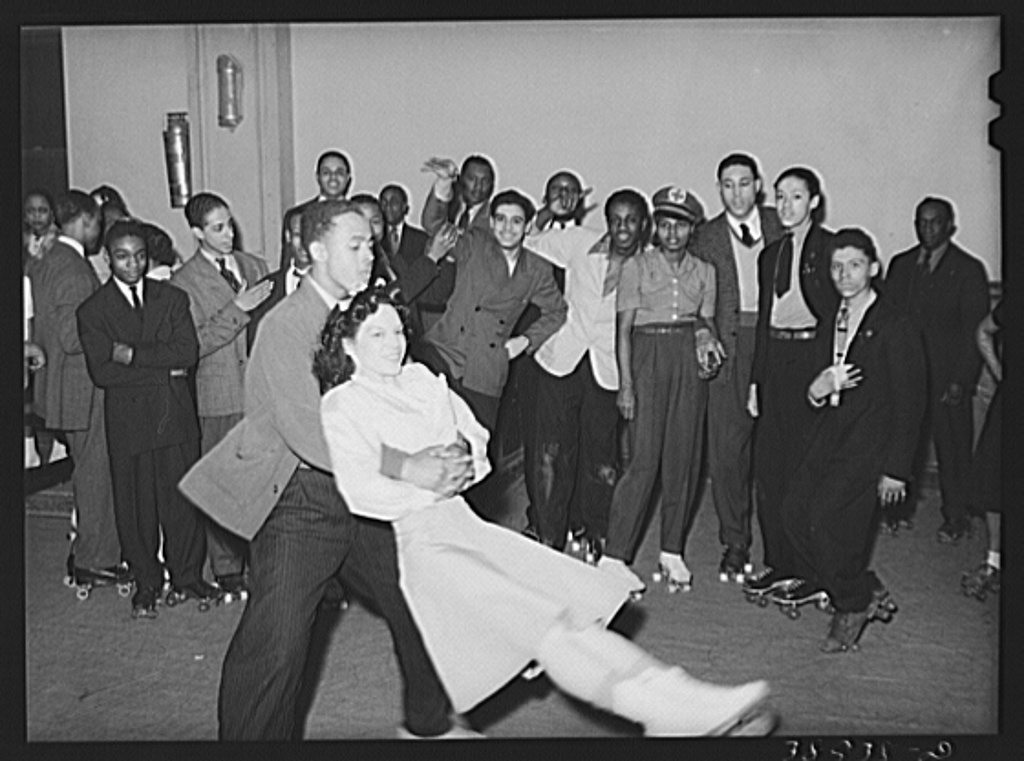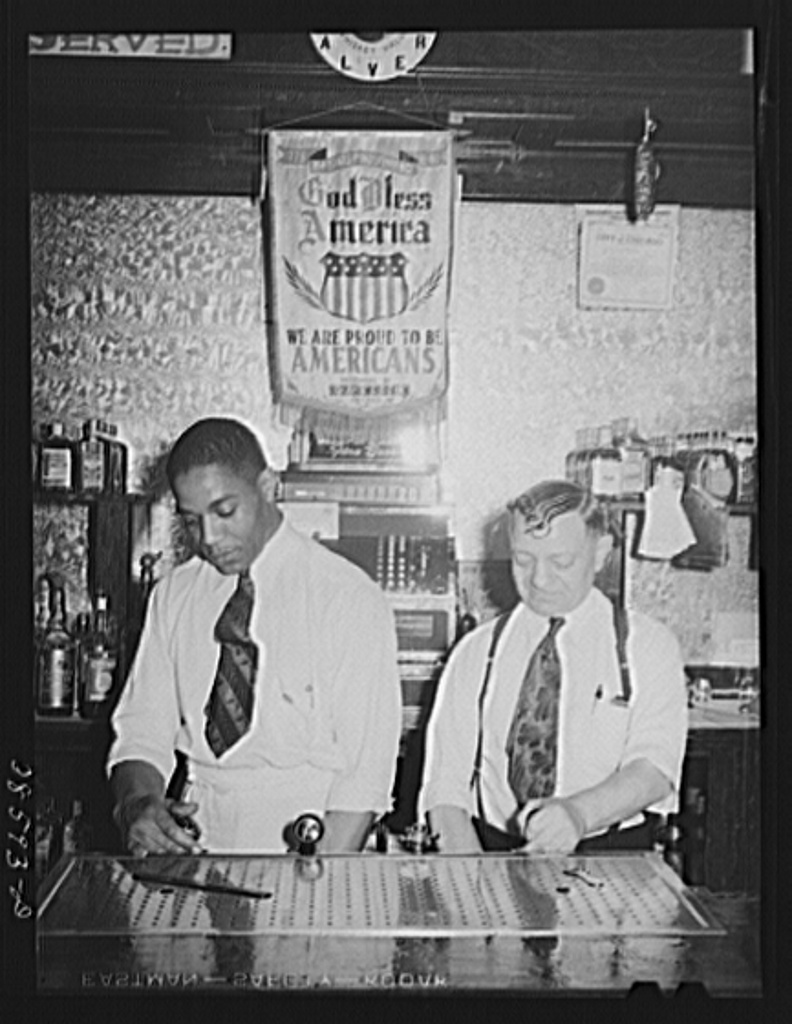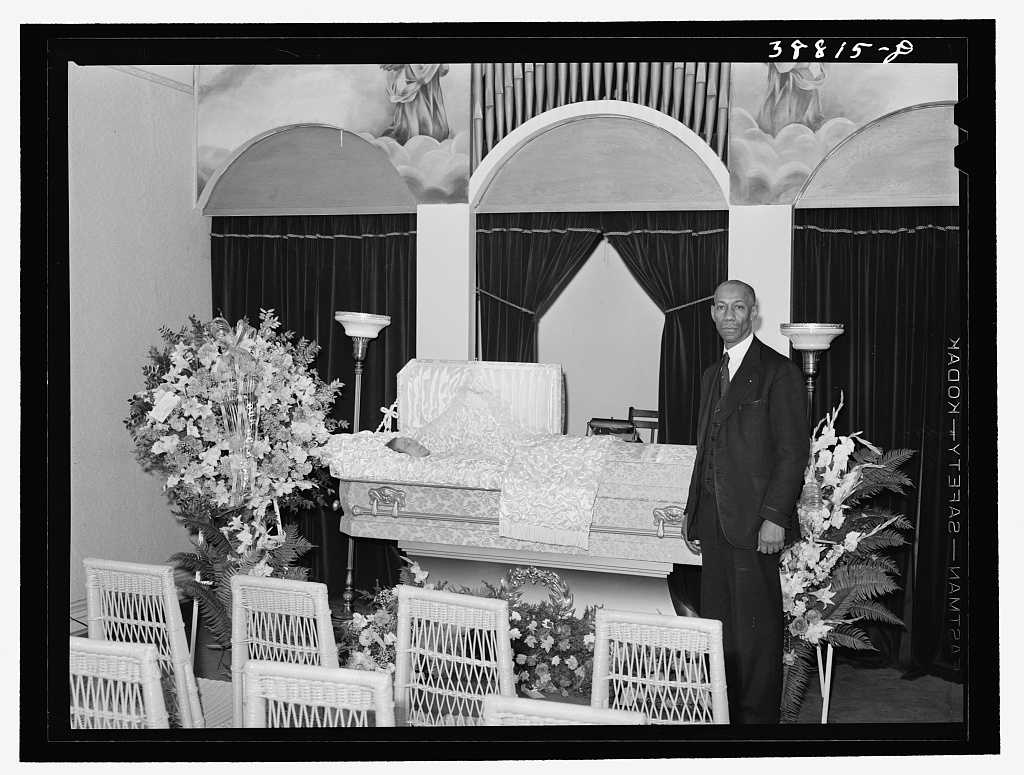In April 1941, Russell Lee and Edwin Rosskam arrived in Chicago, Illinois. Employed as photographers on the Farm Security Administration’s mission to record how people lived and worked throughout the United States, Russell and Rosskam had been deployed to what the Government termed the “black belt”. Their photos show us staff on the Chicago Defender newspaper, drinkers in The Palm Tavern, roller-skaters, barbers, shoppers on Maxwell Street, nights out at The Regal, Easter worshippers at the Storefront Church and home life.
Poverty permeates through everything. Discriminatory practices kept blacks down. And it showed.
Alexis C. Madrigal writes:
One of the most heinous of these policies was introduced by the creation of the Federal Housing Administration in 1934, and lasted until 1968. Otherwise celebrated for making homeownership accessible to white people by guaranteeing their loans, the FHA explicitly refused to back loans to black people or even other people who lived near black people. As TNC puts it, “Redlining destroyed the possibility of investment wherever black people lived.”
Ta-Nehisi’s Coates adds:
Like the Home Owners’ Loan Corporation, the Federal Housing Administration initially insisted on restrictive covenants, which helped bar blacks and other ethnic undesirables from receiving federally backed home loans. By the 1940s, Chicago led the nation in the use of these restrictive covenants, and about half of all residential neighborhoods in the city were effectively off-limits to blacks.
It is common today to become misty-eyed about the old black ghetto, where doctors and lawyers lived next door to meatpackers and steelworkers, who themselves lived next door to prostitutes and the unemployed. This segregationist nostalgia ignores the actual conditions endured by the people living there—vermin and arson, for instance—and ignores the fact that the old ghetto was premised on denying black people privileges enjoyed by white Americans.
The brilliant picture above is called “Negro boys on Easter morning. Southside, Chicago, Illinois”.
The five boys [above] are representative of Chicago’s diverse African-American community, in which poverty and prosperity existed side-by-side. While most black Chicagoans were poor (many were migrants from the South, fleeing racism and searching for economic opportunity), the city was also home to a self-confident black middle class. You can see some of that confidence in Lee’s photo. – John Edwin Mason
One of the group is known:
The only one of the five boys to be identified was the tall, hatless teenager in the middle, Spencer Lee Readus, Jr., who was 14 when the photo was taken. “I was going to the show on Easter Sunday and a white man approached me to ask if he could take a picture of me and these other boys,” Readus said. Lee, posed the kids in front of a parked car. Spencer was the tallest and the only one not wearing a hat, so he was put front and center in the photo.
Readus went on to serve in the U.S. Army during World War II and build a career as a plaster foreman. He and his wife, Setrennia, raised four children, Spencer Lee III, Claudia, Cherie, and Laurence. They lived in the Roseland neighborhood of Chicago.
Would you like to support Flashbak?
Please consider making a donation to our site. We don't want to rely on ads to bring you the best of visual culture. You can also support us by signing up to our Mailing List. And you can also follow us on Facebook, Instagram and Twitter. For great art and culture delivered to your door, visit our shop.
